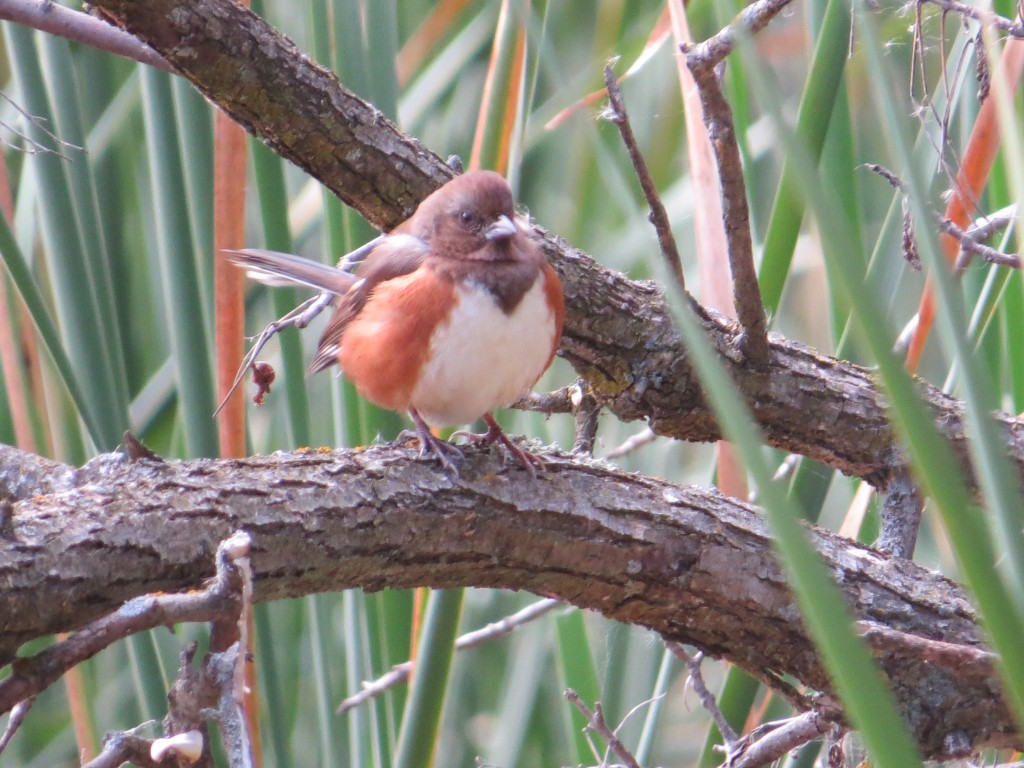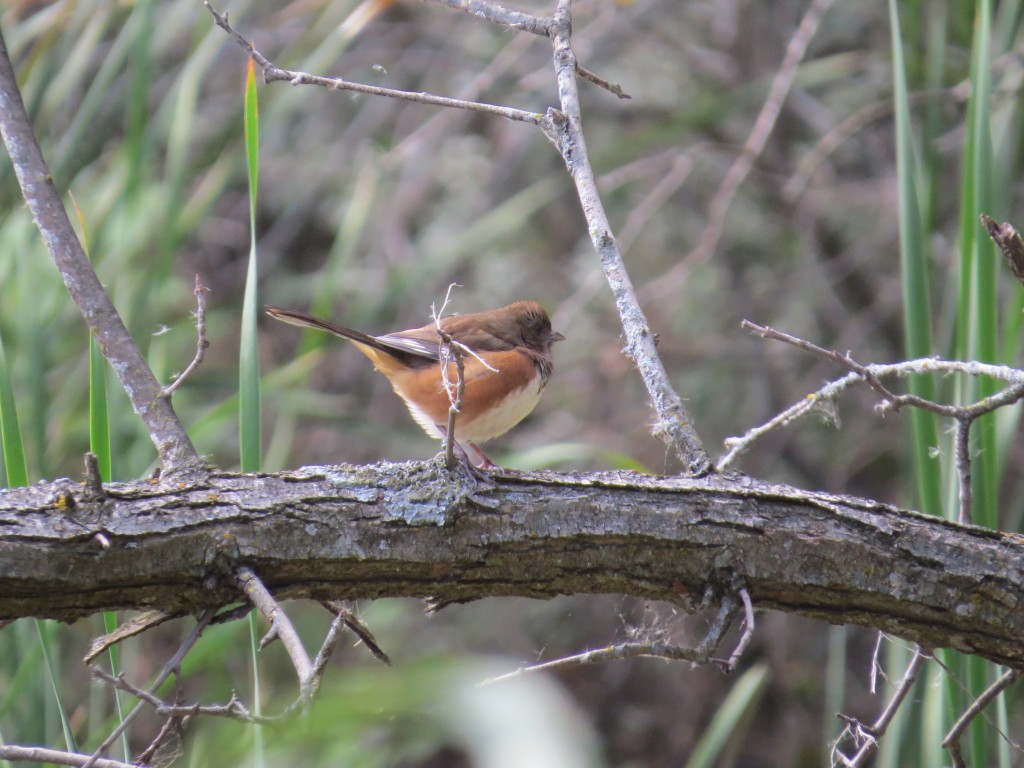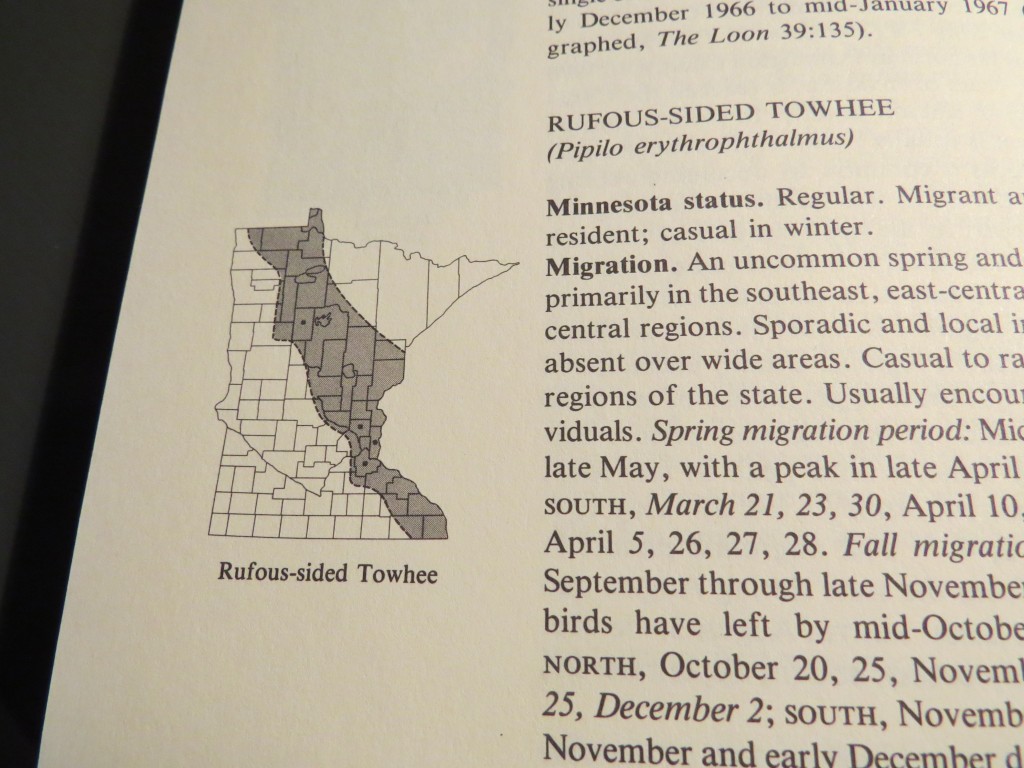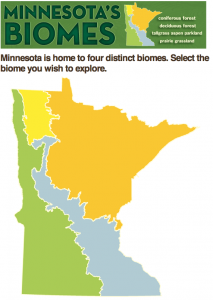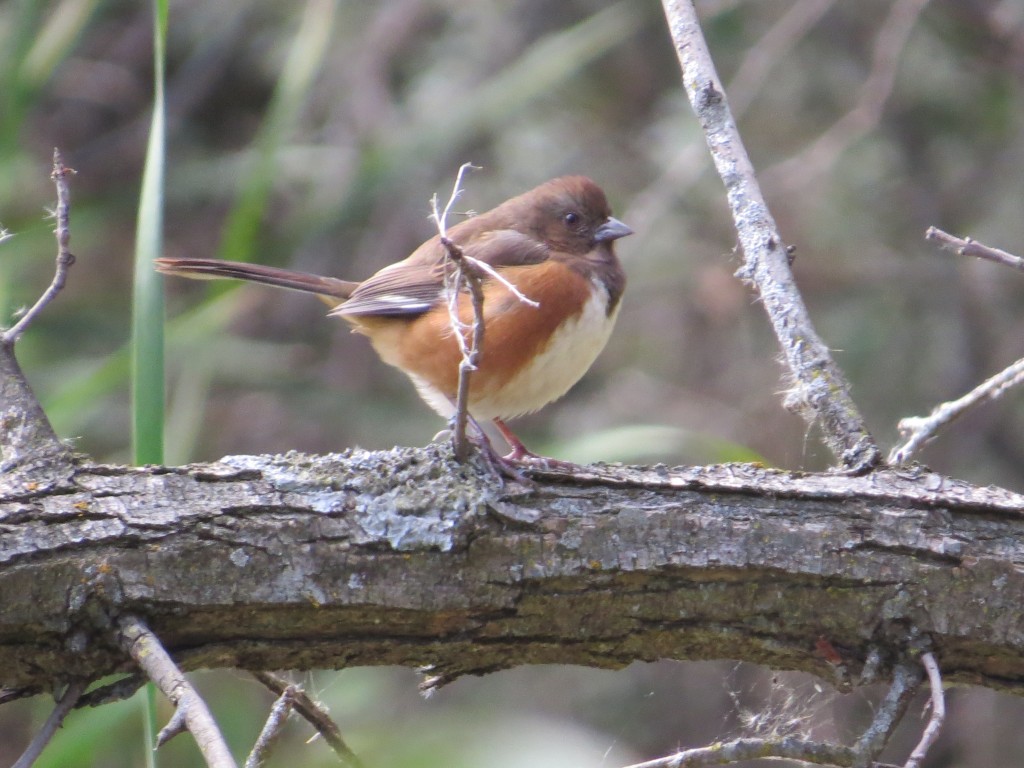 There has been a gaping hole in our Minnesota bird collection. We have traveled extensively throughout the state and have pretty much seen all the specialty birds tucked into hidden nooks and little-known crannies. Despite that fact, we have neglected one of the state’s most important birding areas – Lake Superior. Here the possibilities for new birds abound with many sea duck species, northern gull species, oddball loon species and even three jaeger species. I have never known how to approach birding the big water from the vast 150 miles of shoreline between Duluth and the Canadian border. I had long ago figured that someday I might just have to hire a guide for a day to learn how to bird this sea-environment. A couple weeks ago, though, I saw that Clinton Nienhaus was leading a FREE field trip through the Duluth Audubon Society along the North Shore specifically to look for sea ducks. Free is always good, unless it’s a puppy, so I went for it. Visions of Scoters and Harlequin Ducks danced in my head while I awaited this trip.
There has been a gaping hole in our Minnesota bird collection. We have traveled extensively throughout the state and have pretty much seen all the specialty birds tucked into hidden nooks and little-known crannies. Despite that fact, we have neglected one of the state’s most important birding areas – Lake Superior. Here the possibilities for new birds abound with many sea duck species, northern gull species, oddball loon species and even three jaeger species. I have never known how to approach birding the big water from the vast 150 miles of shoreline between Duluth and the Canadian border. I had long ago figured that someday I might just have to hire a guide for a day to learn how to bird this sea-environment. A couple weeks ago, though, I saw that Clinton Nienhaus was leading a FREE field trip through the Duluth Audubon Society along the North Shore specifically to look for sea ducks. Free is always good, unless it’s a puppy, so I went for it. Visions of Scoters and Harlequin Ducks danced in my head while I awaited this trip.
At long last, it was time. This past Friday I picked Evan up from school, and we drove the 3.5 hours to Duluth. We stayed in a hotel so we could be up and ready to go in Canal Park at 7:30 that next morning. Evan was excited about the pool; I was excited about leaving at decent hour instead of 3 AM if we had foregone the hotel.
We met up with our guide, Clinton, and the rest of the small group for an adventurous day ahead. First up was birding the canal and canal walls that you see above. One never knows what interesting ducks will be in the canal or what special gulls line the walls. Alas, it was pretty ho-hum. We tried to make a Herring Gull into a Thayer’s, but it didn’t work. So it was off to our next stop, Brighton Beach.
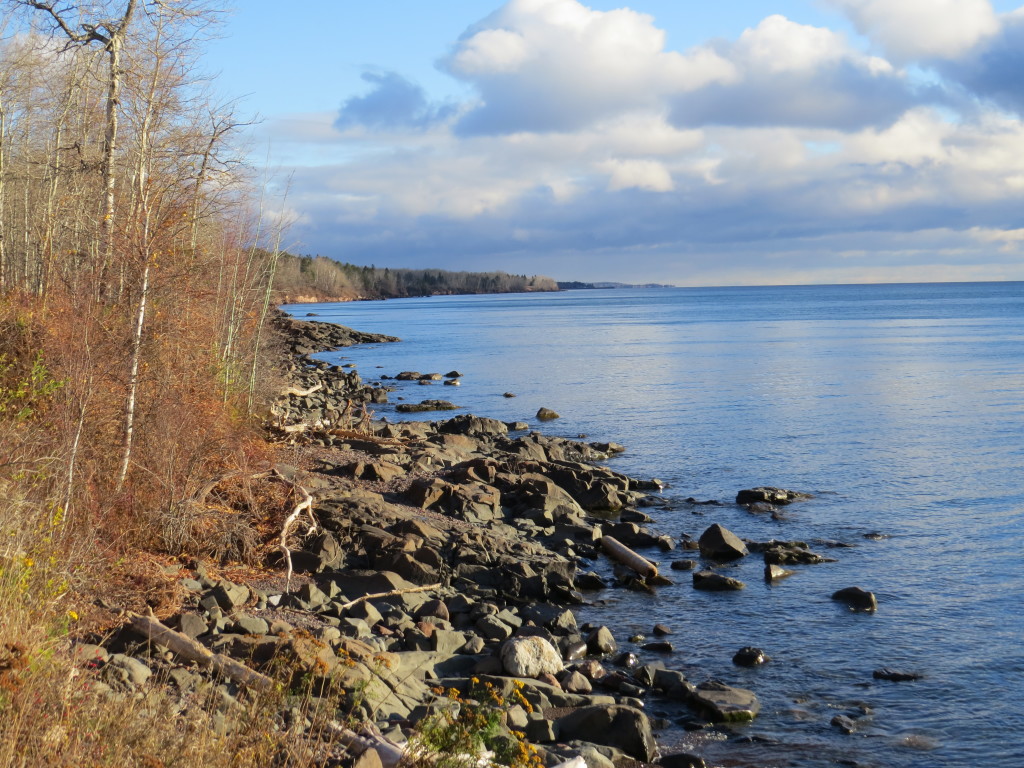
No ducks could be seen, just a couple of Horned Grebes. We did observe a delightful birding phenomenon as we had Common Redpolls migrating by us and through us by the hundreds. This was a great sign because strangely there were only two reports of Redpolls in the entire state last year. That abysmal report contrasted greatly with the numbers we had two years ago when we had about 150 in our yard alone. Needless to say, it was good to see these old friends again. It was also fun to witness birds migrating down the shore; southbound birds hit the big water of Lake Superior and opt to fly southwest down the shoreline. Many of the Redpolls were literally flying over the rocks you see above. I have hundreds of Redpoll photos at close range in great light of the many varied forms of this bird when they hung out in our yard two years ago. So these photos are not the best but are provided to add a little meat to the bones of this post.
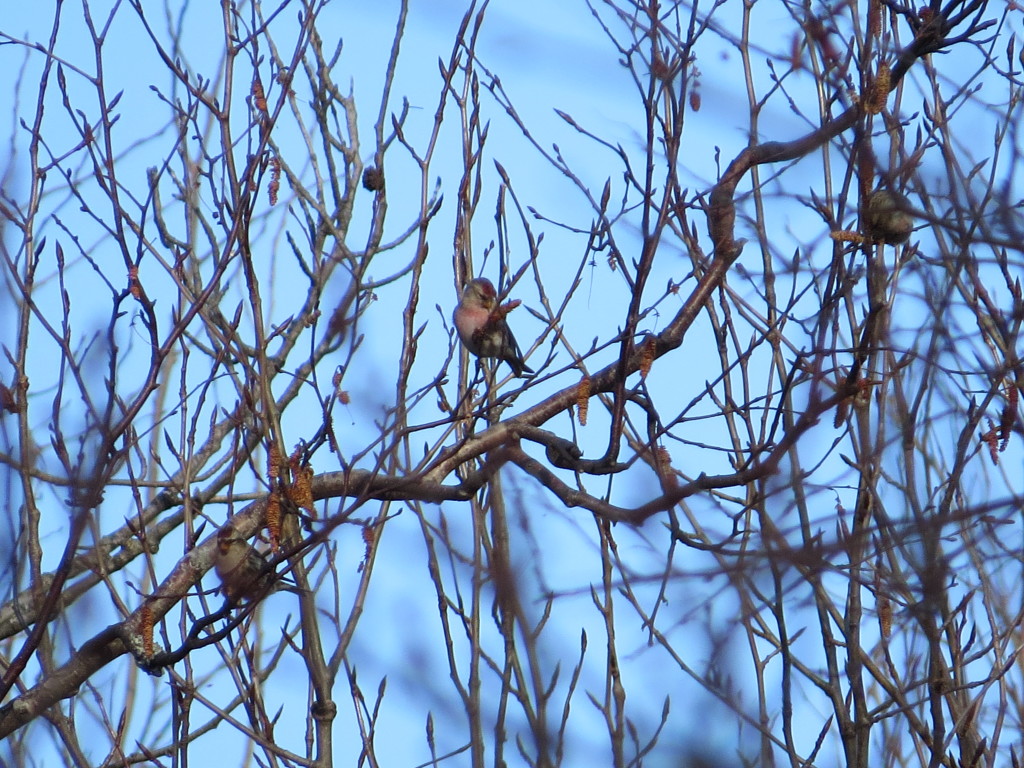
Clinton, a graduate student in environmental education, taught us that the Redpolls love to eat the seeds of birch and aspen trees. The catkins (those banana-shaped things below) contain thousands of the tiny, paper-like seeds. When the Redpolls forage on these catkins, hundreds of seeds are then dispersed.
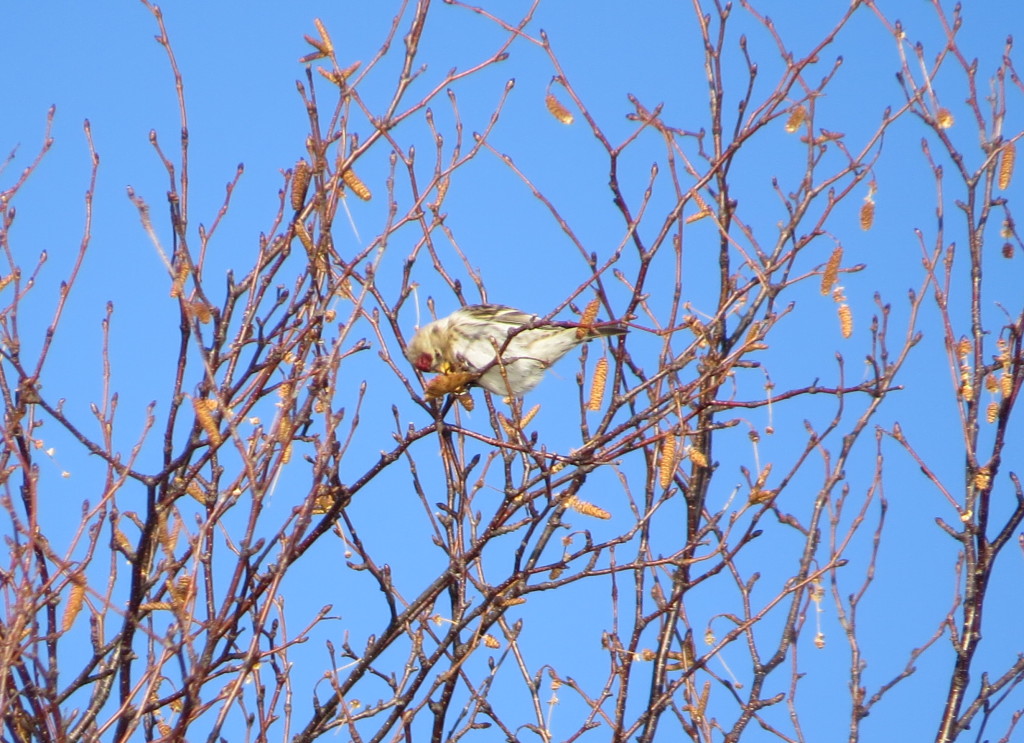
Throughout the day we kept seeing more and more Common Redpolls. A conservative estimate would be 1,000 birds. Clinton pointed out that their flight calls sound like little lasers shooting. That tip really helped this birder who is challenged in the auditory department.
After Brighton Beach our convoy of cars snaked its way up the shore to Stoney Point. All I found here were dismal memories of missing Boreal and Great Gray Owls a couple years ago. There still were no ducks either. It was tough to get discouraged, though, because we had a long ways to go and many more stops to make, like at Agate Bay and Burlington Bay for which the town of Two Harbors is named.
Right away at Agate Bay an interesting raptor hovering in the stiff wind caught our attention. It was a Rough-legged Hawk which ended up being one of several for the day. Right now they are migrating through. I always enjoy seeing this hawk.
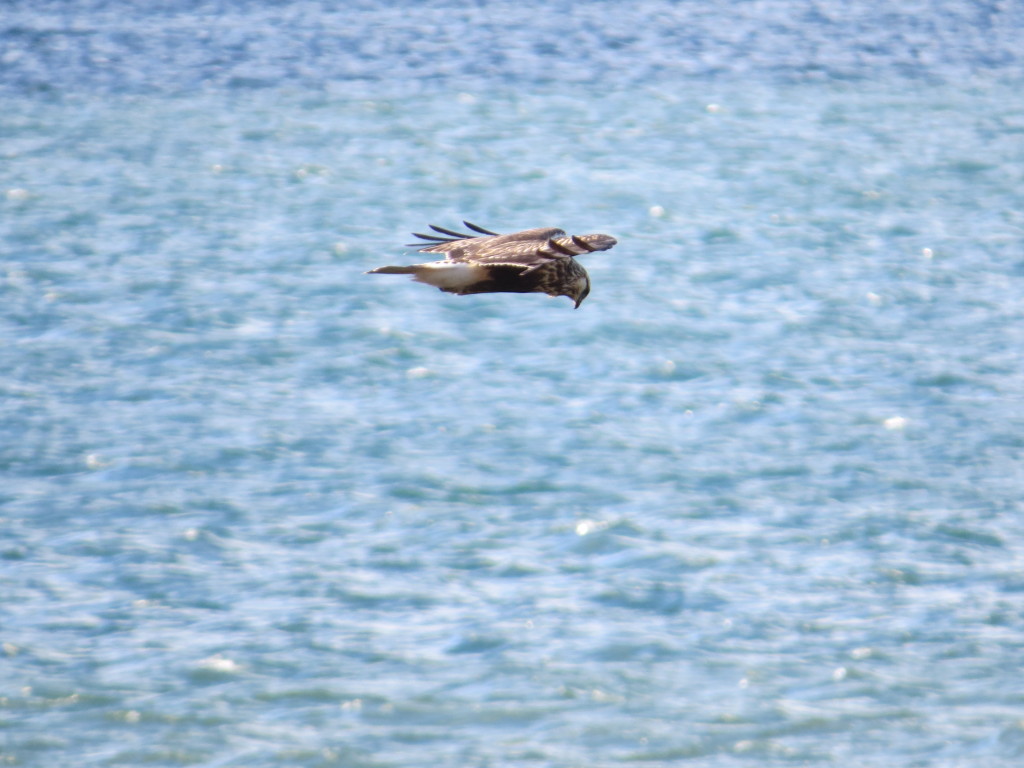
It was amazing how it stayed in one place in the air, seemingly hovering like a helicopter. Finally it swooped down to the grassy bank below where it caught a mouse and proceeded to eat it on a rock. Clinton taught us that mice are their primary food of choice and that though they are the same size as a Red-tailed Hawk, their talons are half the size.
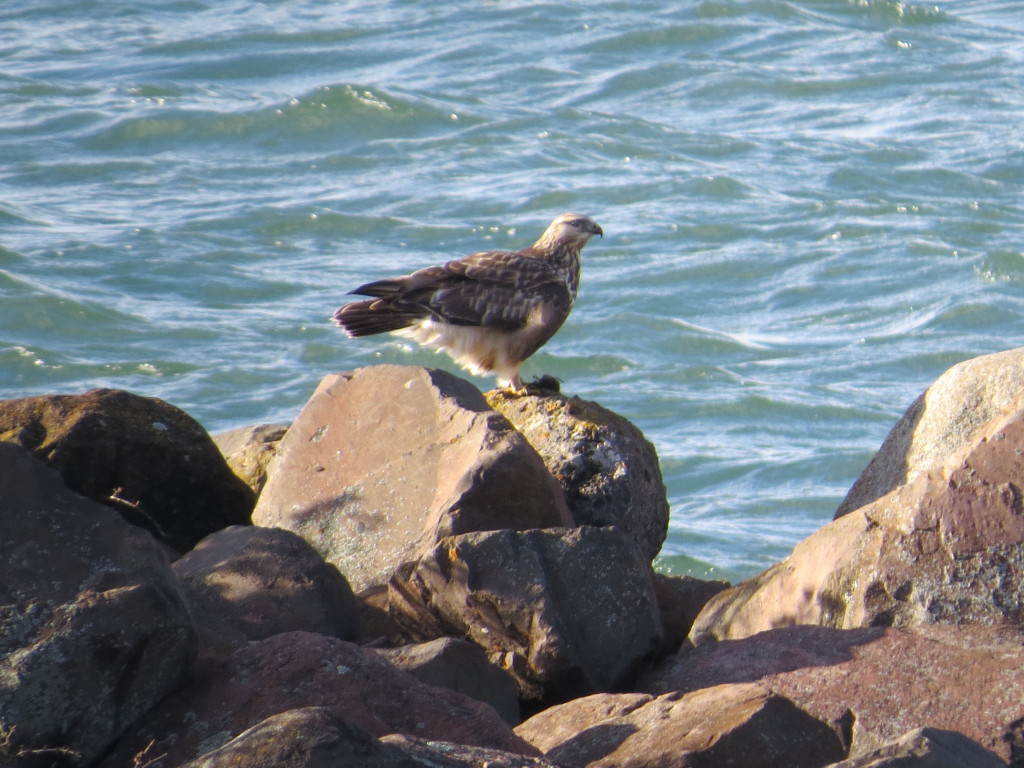
This hawk continued to dazzle us as it flew low over the parking lot.
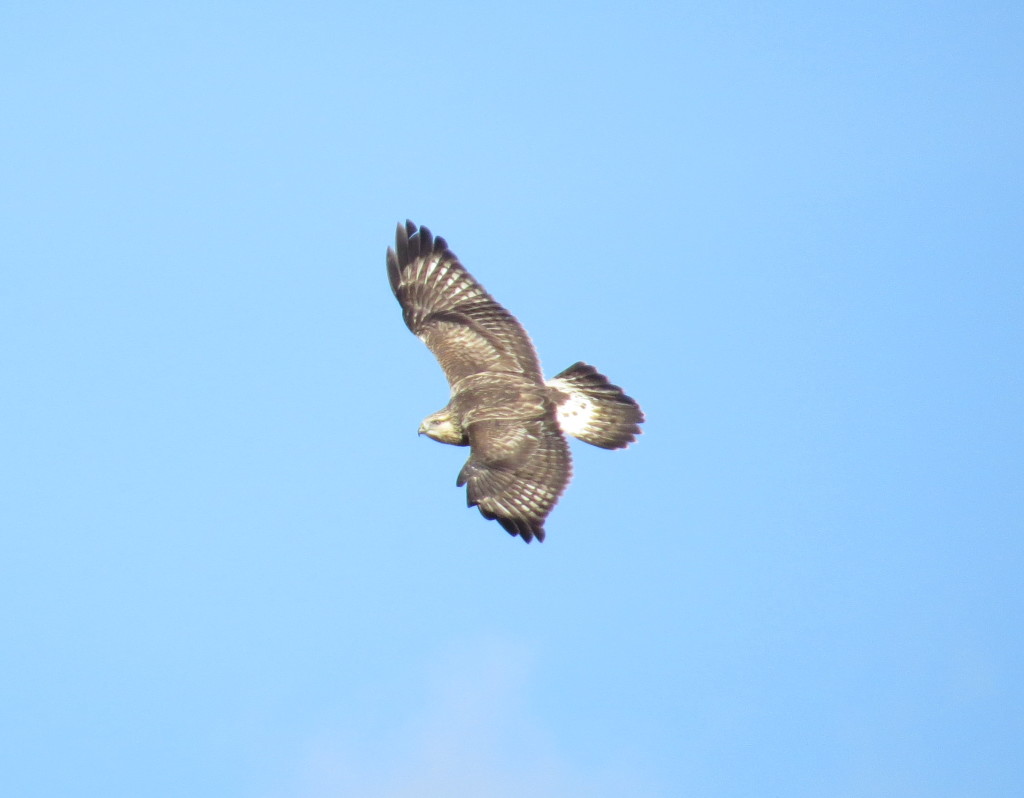
Here’s my favorite view of a Rough-legged Hawk when it shows off those black, carpal patches.
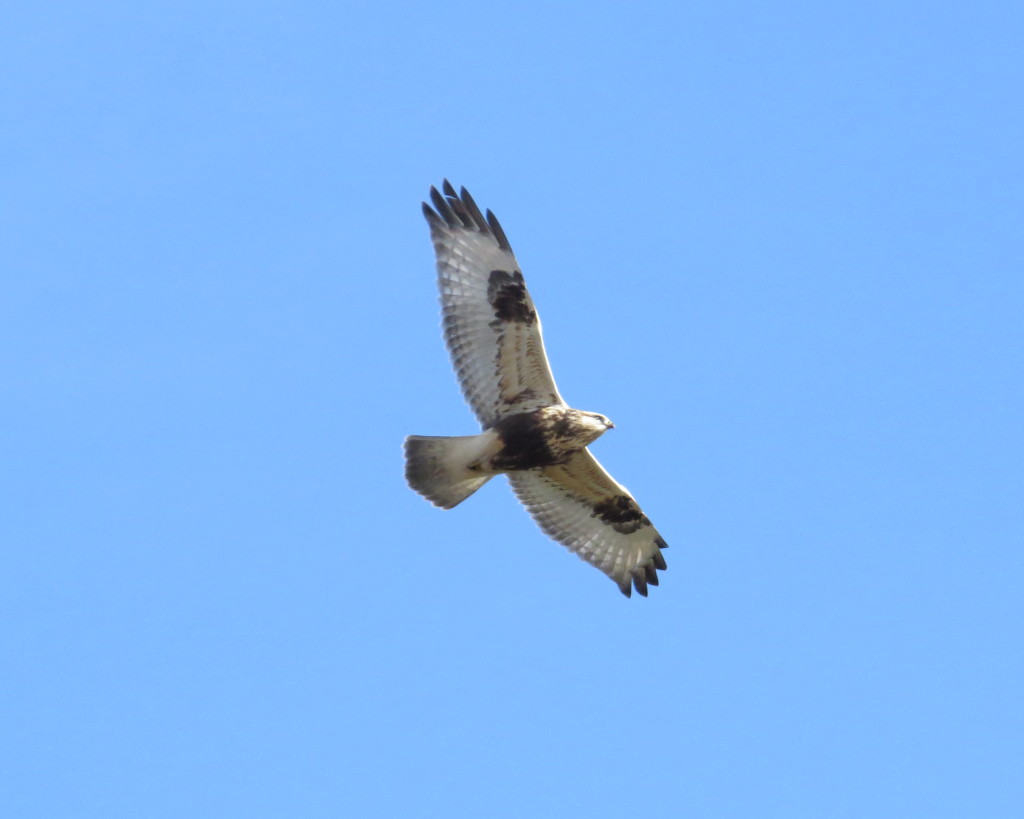
But as cool as the hawk was, we still had no luck finding ducks on the water. We took in migrating Bald Eagles, though.
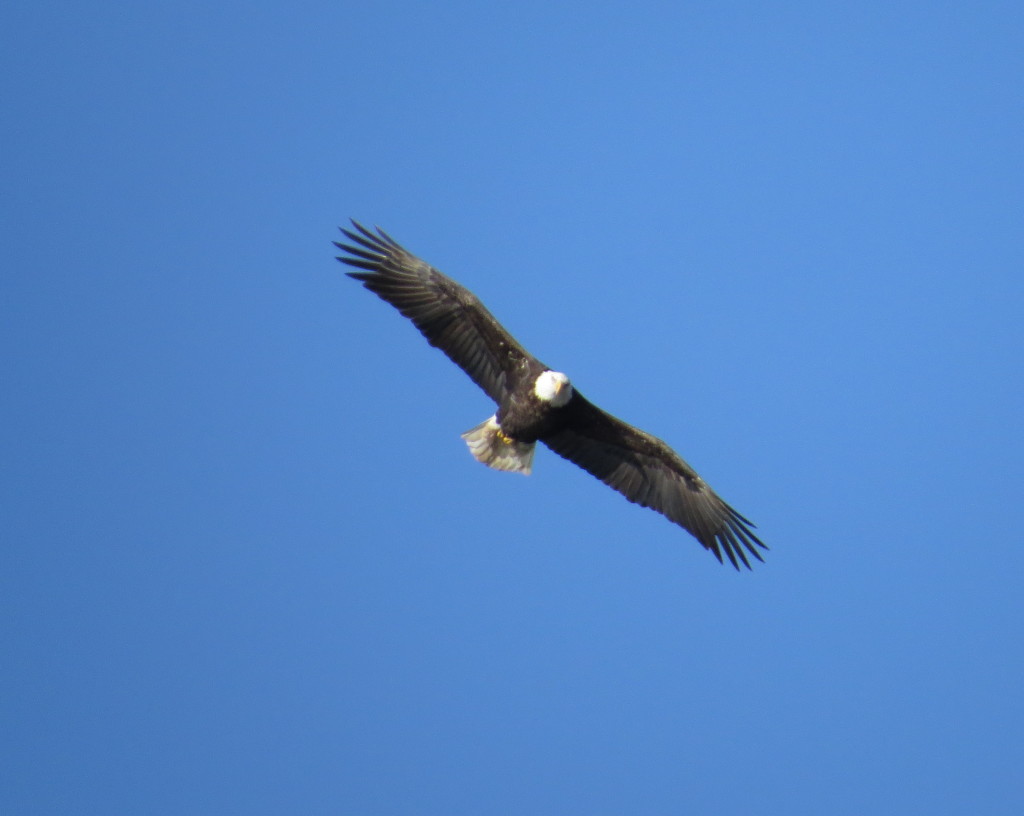
And even some that might just be sticking around.
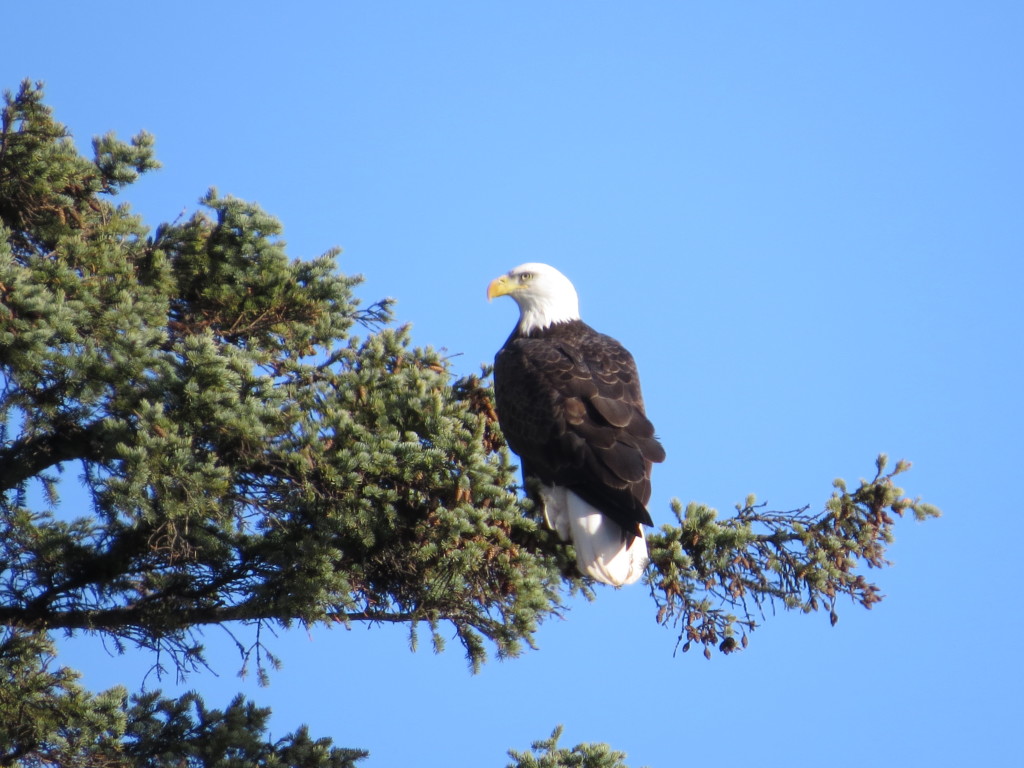
We took a little walk around the Two Harbors Lighthouse hoping to relocate the Western Kingbird or Northern Saw-whet Owl that had been seen there last weekend by the Minnesota Birding Weekend group. No luck on those.
After awhile it was time to keep heading northeast up the shore. Stops at the Silver Bay Marina and Taconite Harbor kept up the trend of the day – no sea ducks. It was frustrating because in the past week all three Scoter species, Long-tailed Ducks, a Harlequin Duck, and a King Eider had all been seen. We were running out of shoreline in a hurry. However, Taconite Harbor did have one goody for us – a flock of fly-over lifer Bohemian Waxwings! We never could get them to stick around to get good looks, but it was fun to finally get a life bid.
The next stop finally produced what the trip was offering. As we exited our vehicles at the Cut-Face Creek Wayside at Good Harbor Bay, we could see a few dark blobs on the water. One of those blobs was a Red-necked Grebe, but those three were our first lifer of the day, the White-winged Scoter! This was a hoped for bird.
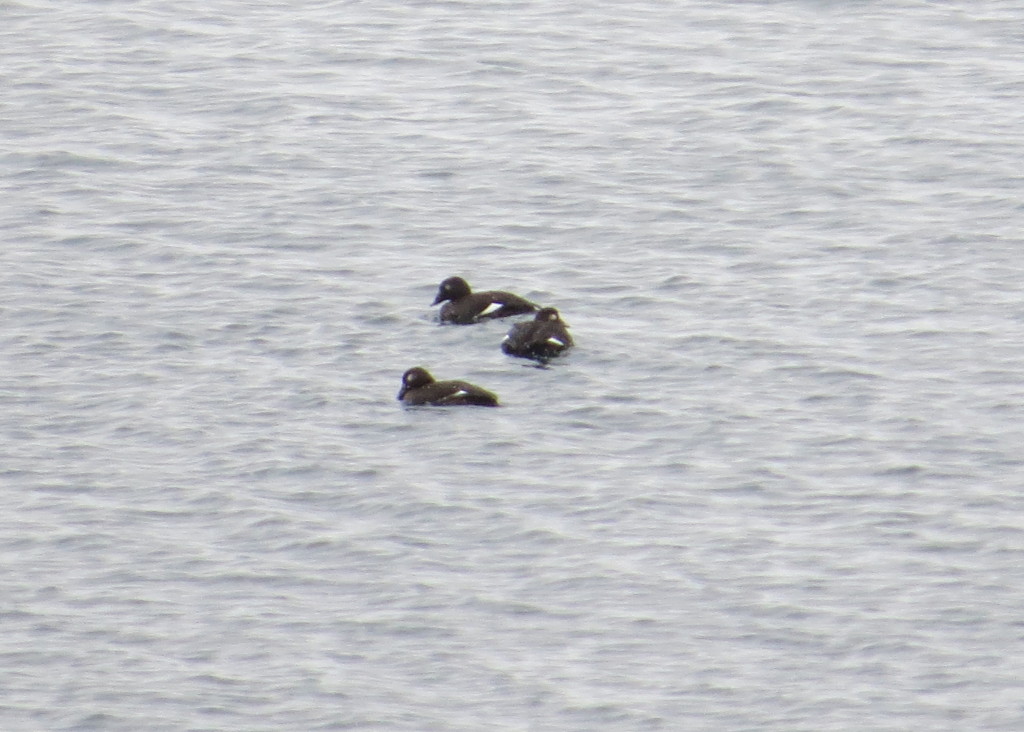 I was hoping for closer looks, but distance was a factor…
I was hoping for closer looks, but distance was a factor…
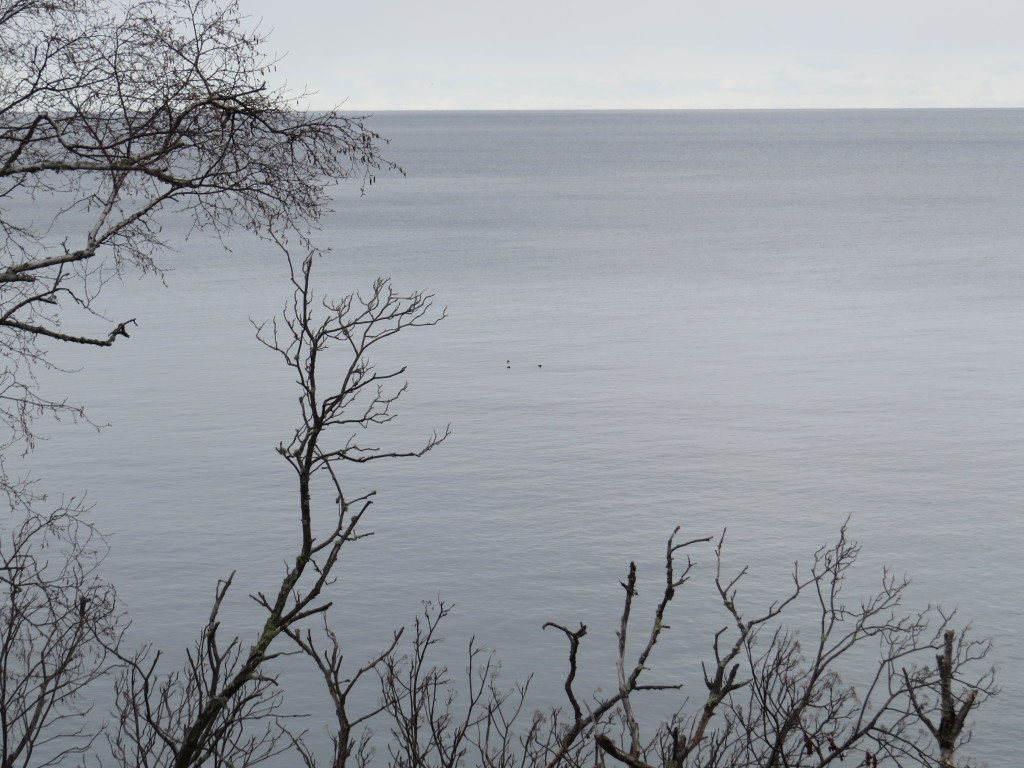
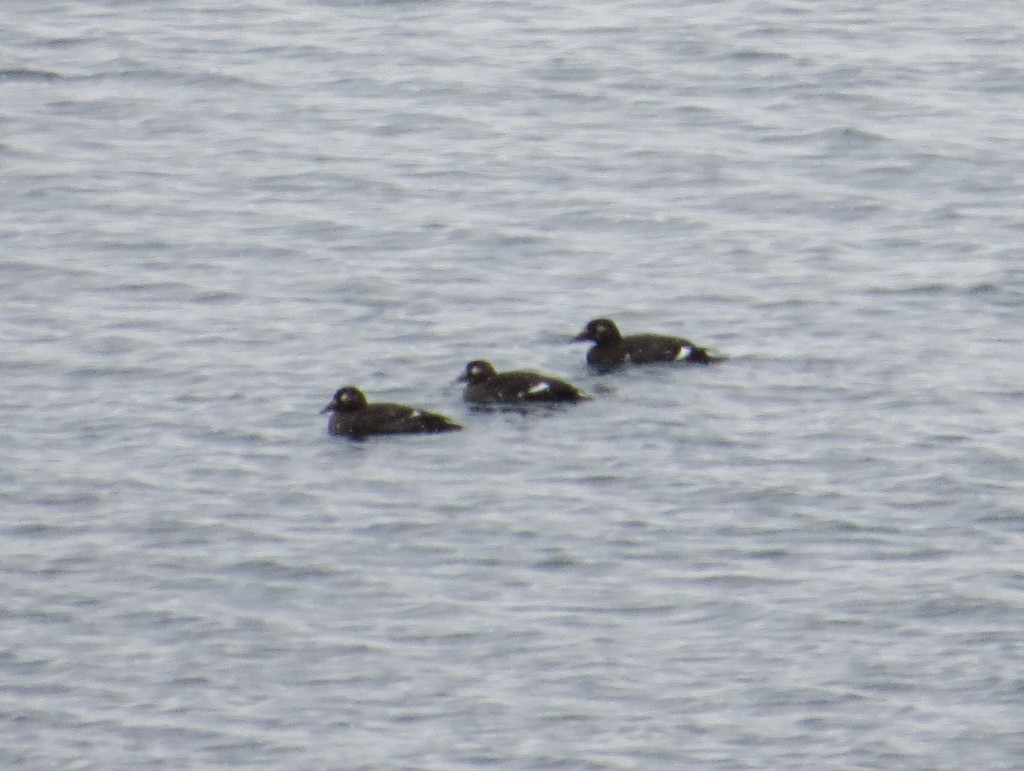
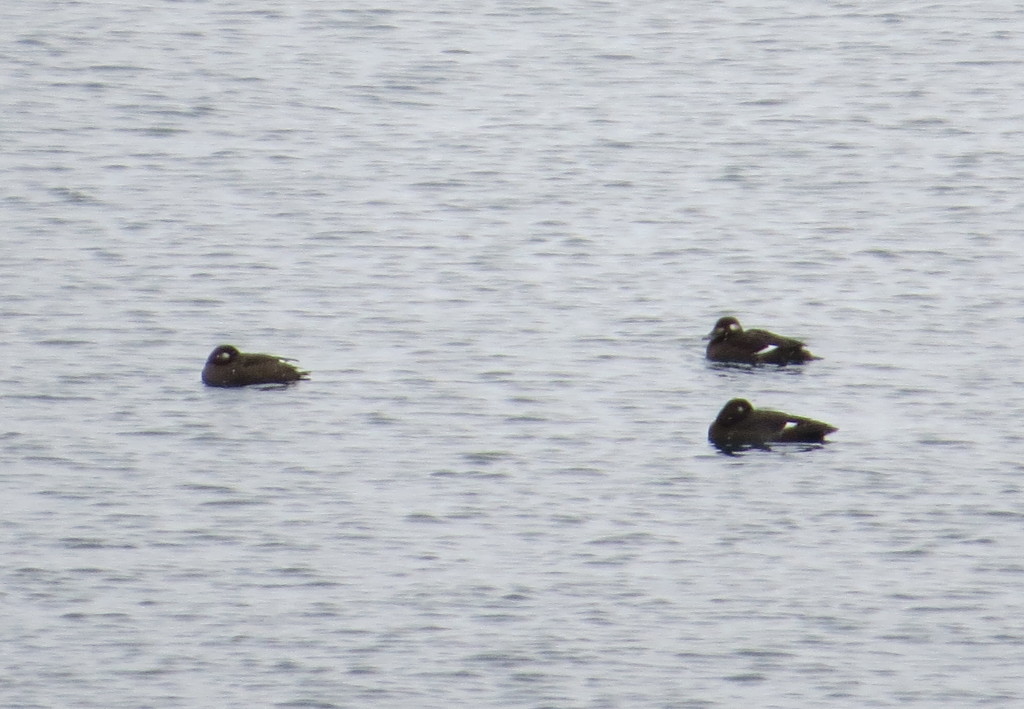
I think we all had a sense of satisfaction of finally seeing a trip target. We got to observe the Scoters dive which they do differently that divers. Clinton told us to pay attention to how the ducks open up their wings just before they duck under. It was pretty cool to watch the trio do this in unison.
With spirits buoyed we made the short jaunt into Grand Marais to see what the harbor was harboring. It turns out there wasn’t much in the way of ducks, and there were zero sea ducks. One of the highlights, though, was getting to observe two Snow Buntings at arm’s length as they foraged in the parking lot. I have seen many, many Snow Buntings but never this close as they are a skittish bird and never with a backdrop that is anything other than white. This was a real treat.
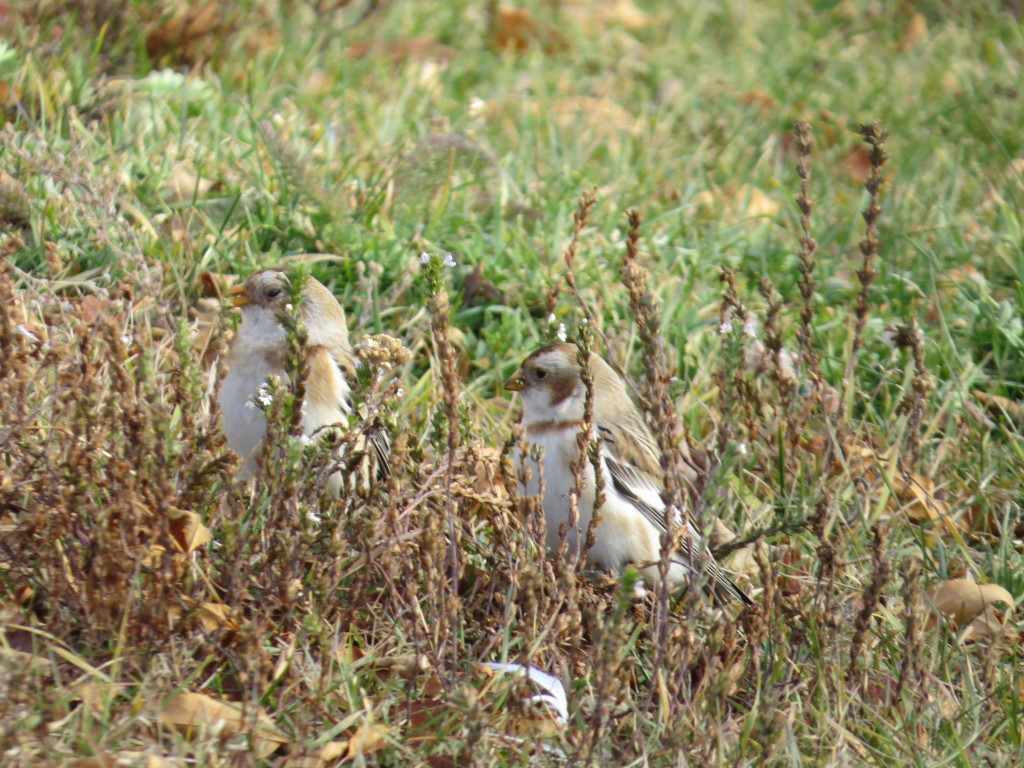
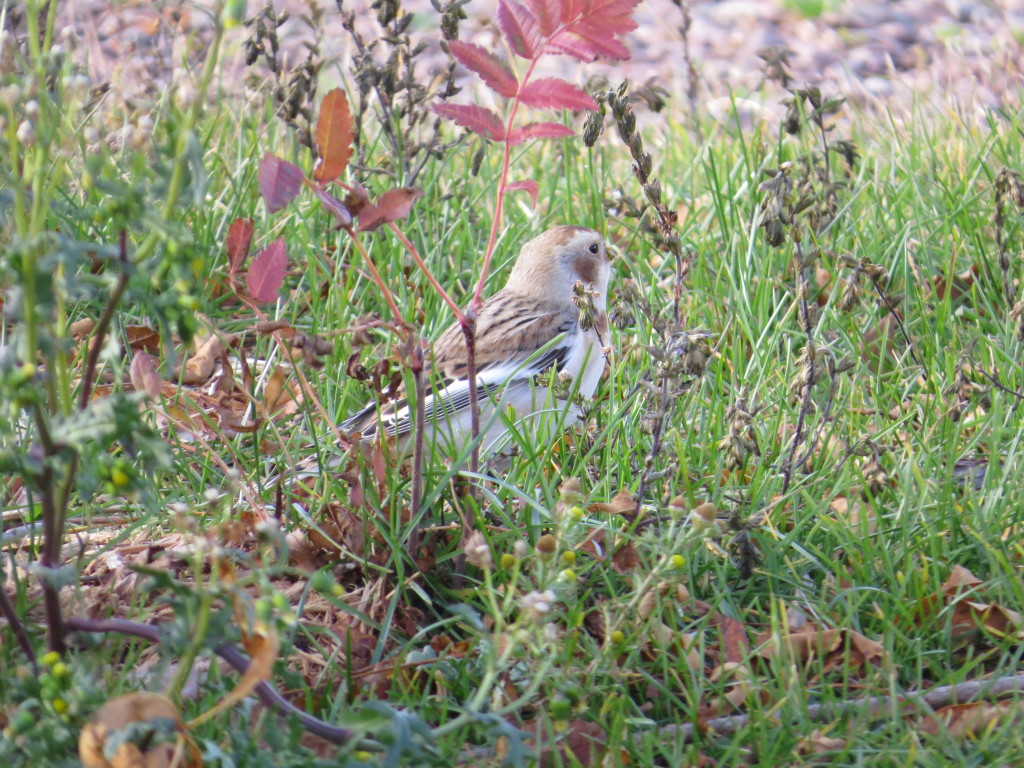
And here is perhaps the best SNBU photo I will take my whole life:
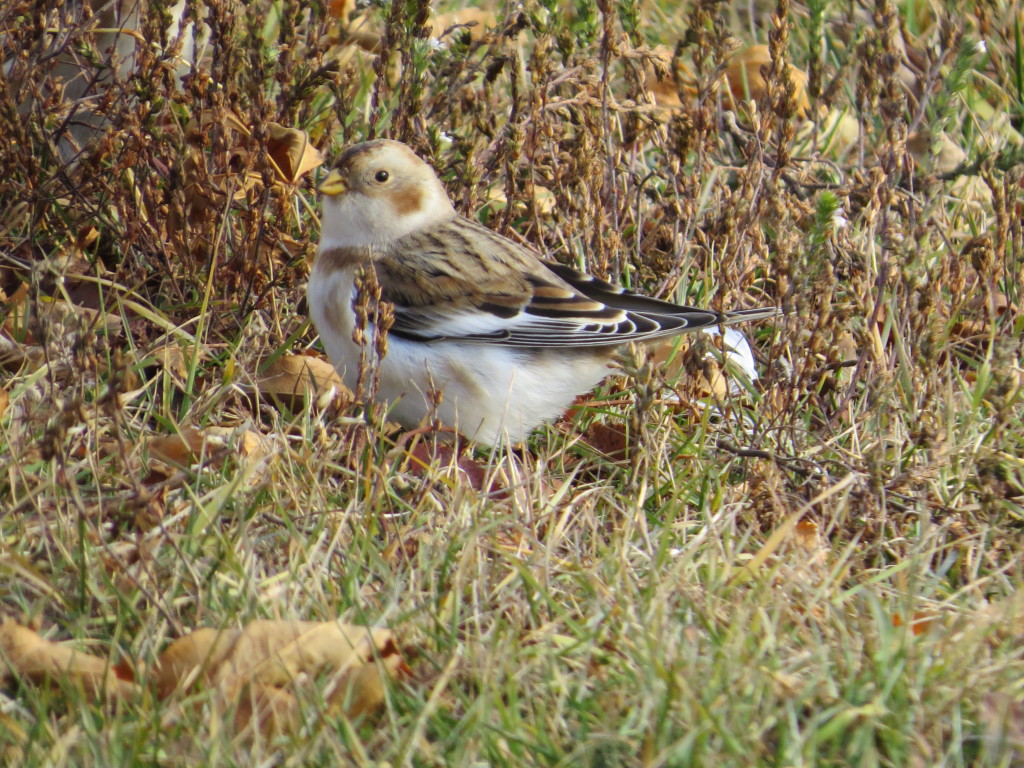
We continued to bird around Artist’s Point. Interestingly the group found an out-of-season, out-of-range Western Meadowlark right on the Coast Guard station lawn. Then it was off to the lighthouse to get some better looks at the gulls across the harbor channel. The appropriately named Sawtooth Mountains are in the background.
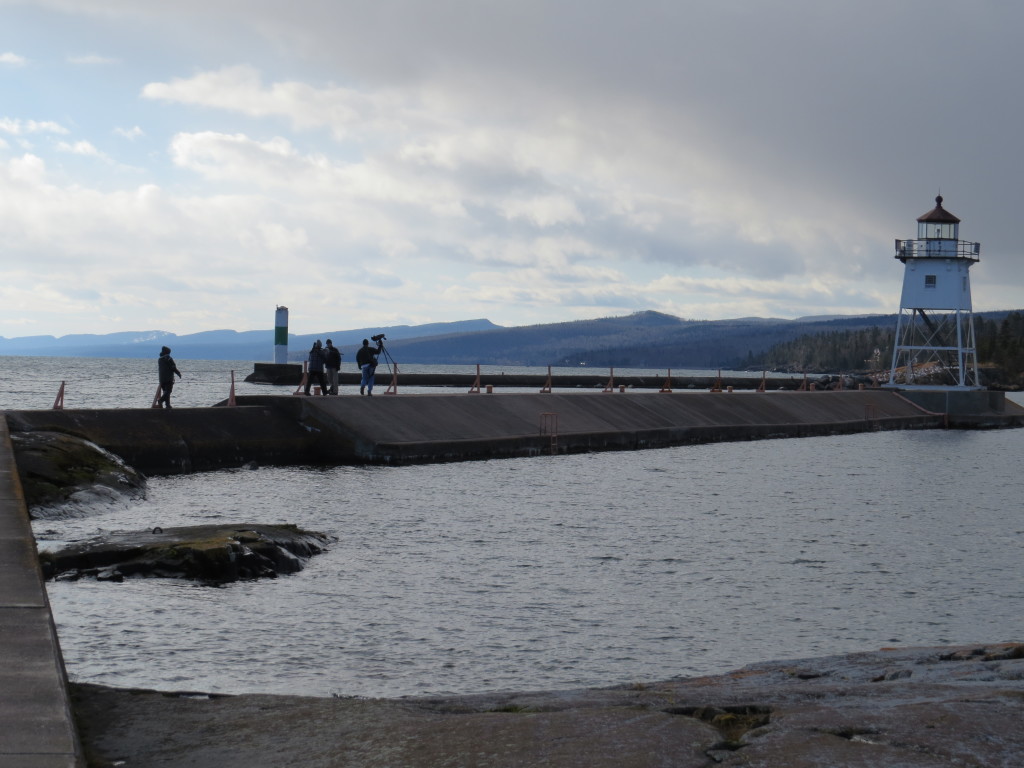
Birds or no birds, it was an epic adventure for a 7-year-old to hike out to the lighthouse. I had brought along his deer-hunting snowsuit to keep him safe on this opening day of deer season. Perhaps I should have also brought a life jacket and a wetsuit??
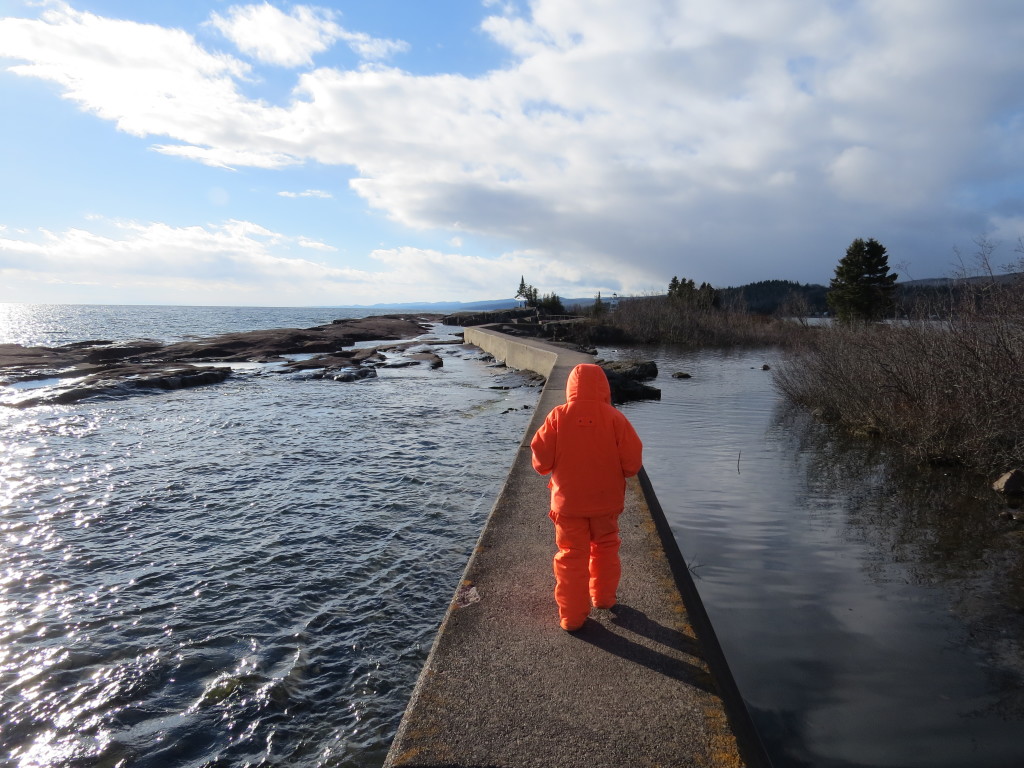
King of the world, this very cold world.
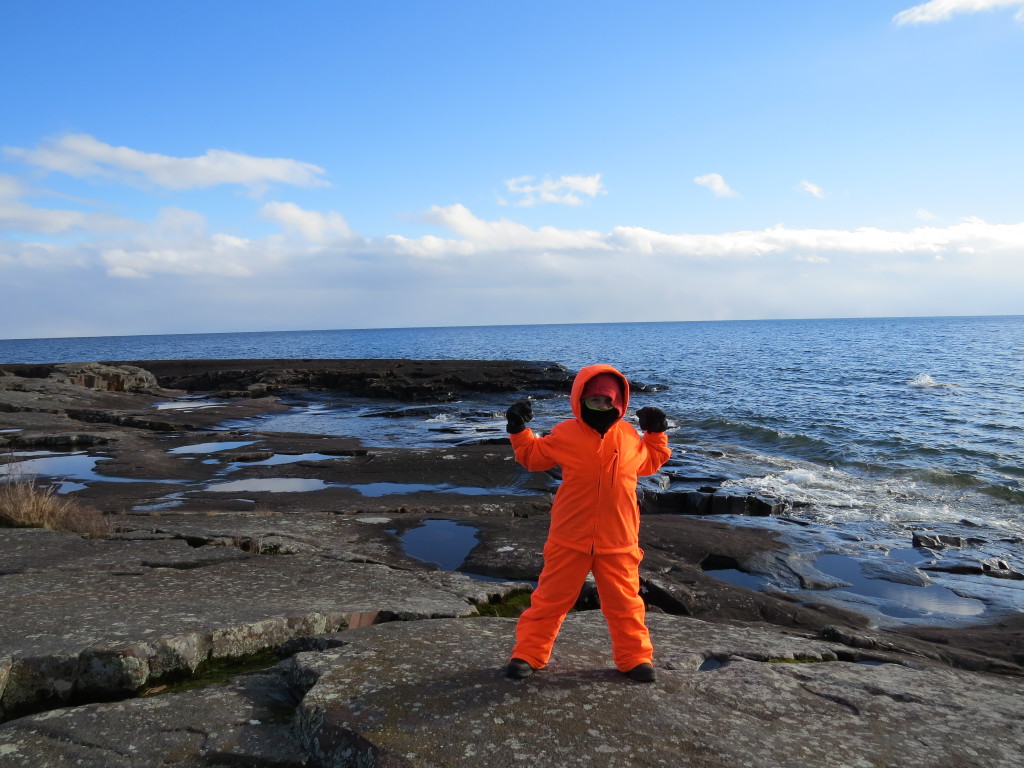
Out by the lighthouse we scanned the gulls across the way. I really don’t know gulls, so in this department I am not the least bit embarrassed to let someone tell me what some gull is or what cycle it is. Clinton tells us this tawny-colored bird in the center of this shot is a first-cycle Thayer’s Gull. We tallied it for the life list and moved on. Personally I find these lichens to be more fascinating.
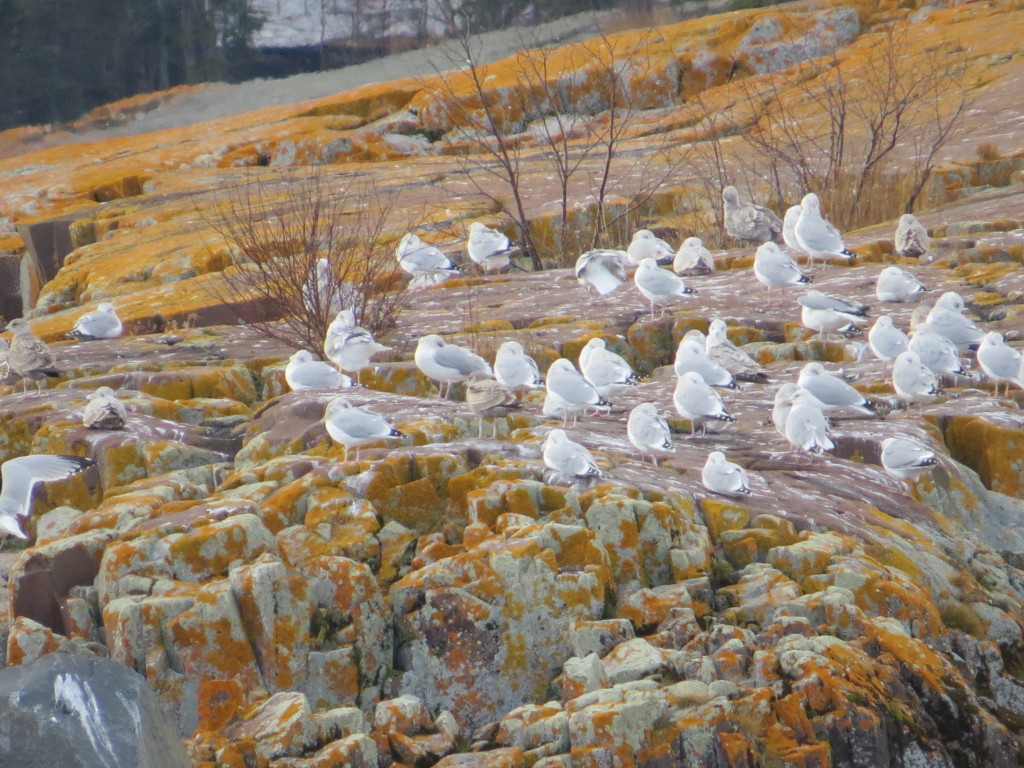
From Grand Marais we had a couple stops left. We did them out of sequence going to Hovland first, the furthest point we were going to, and Paradise Beach second on the way back to Grand Marais.
There were no ducks at Hovland. Paradise Beach held a few more White-winged Scoters that I never saw but the group did see and one Bufflehead that we tried to turn into Harlequin Duck. Finally darkness was upon us and the great day of North Shore birding was over. Our hopes for more sea ducks the next day would not be further up the North Shore as we had no passports with us. Instead, our hope for the next day was still alive because Evan and I would be able to continue the duck hunt back down the shore on our way to Duluth. And it would prove to be a very bright day.
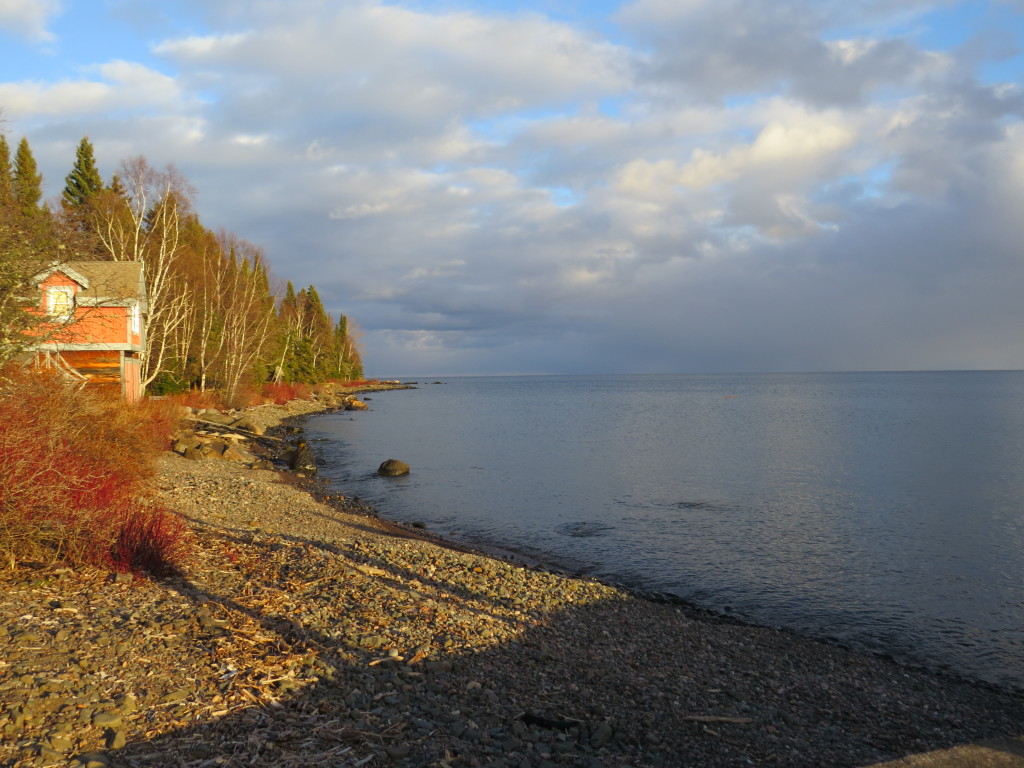
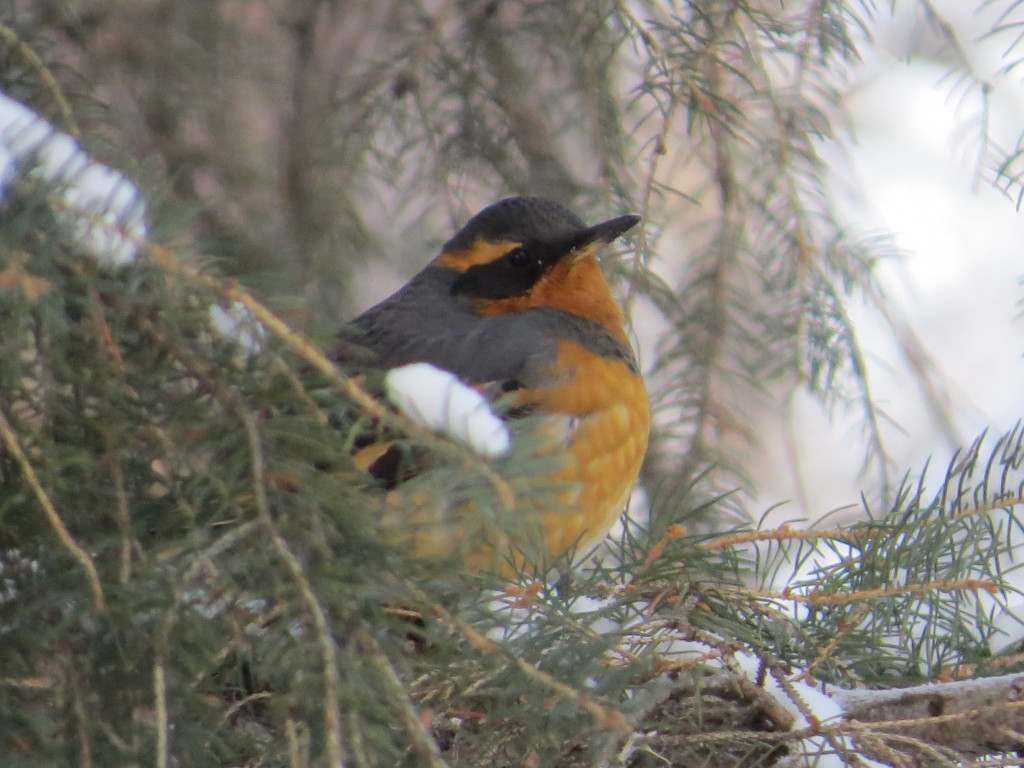
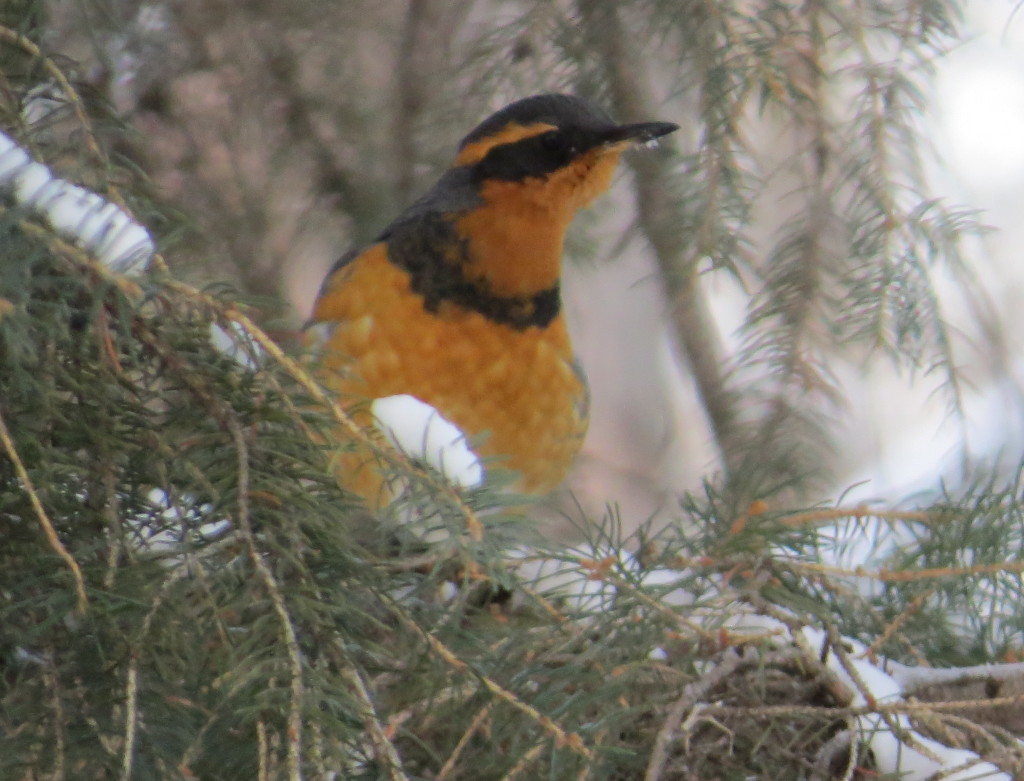
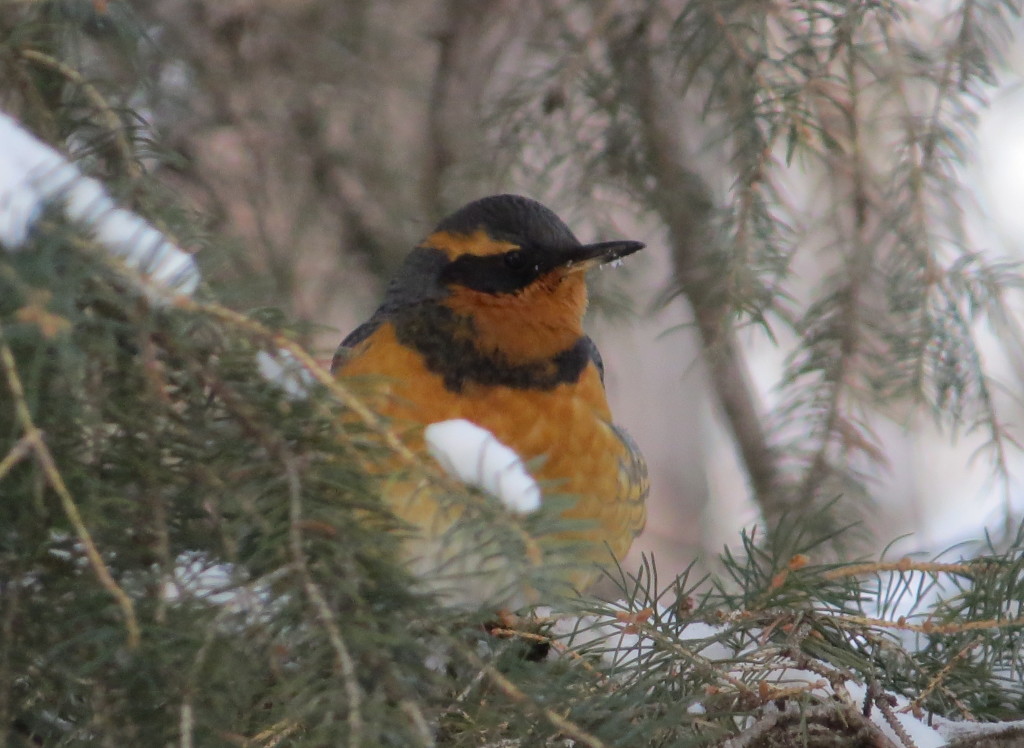
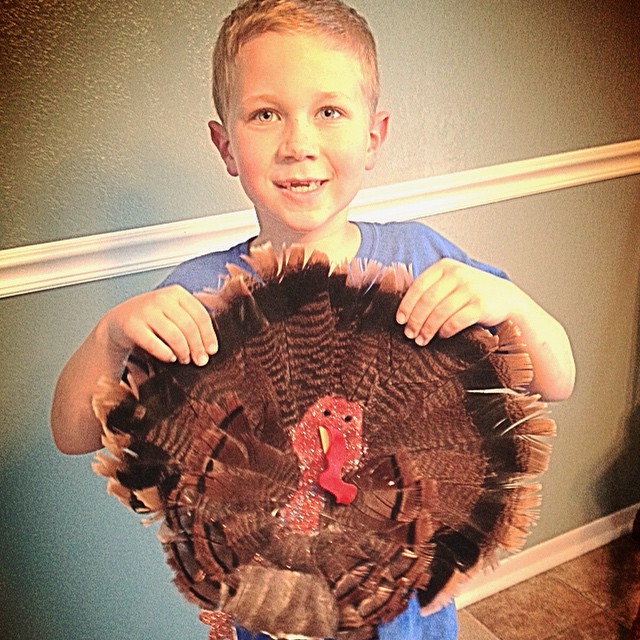

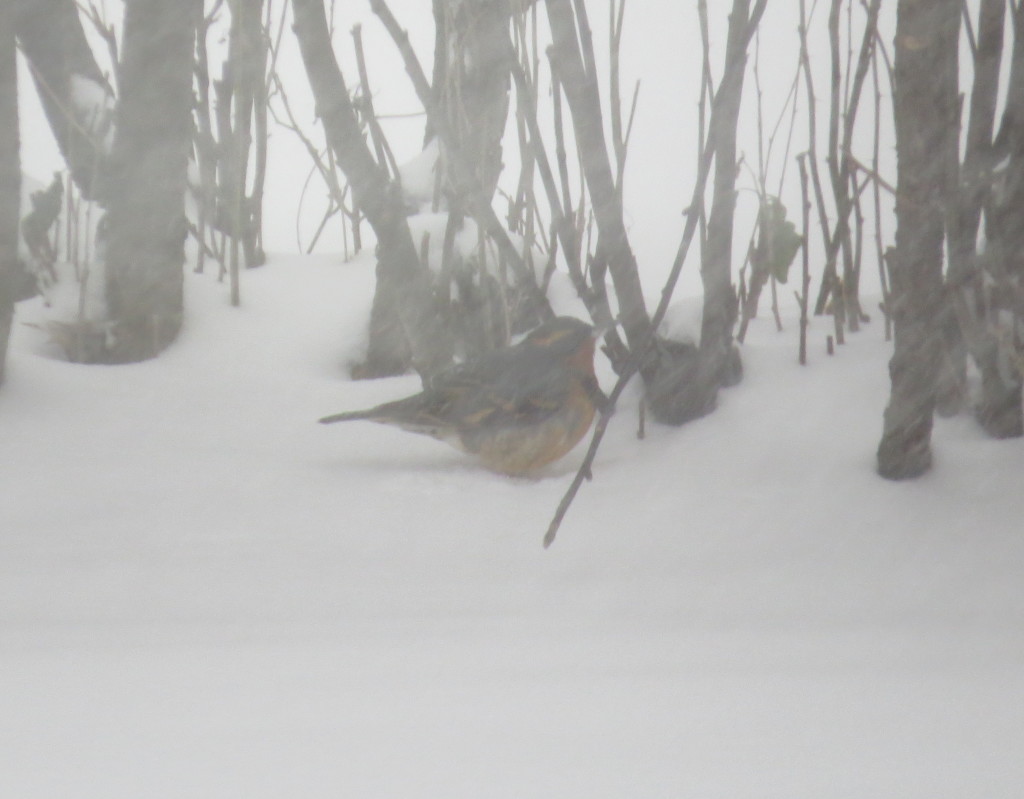 Blizzards make for bad photos, but they more than make up for it with good birds!
Blizzards make for bad photos, but they more than make up for it with good birds!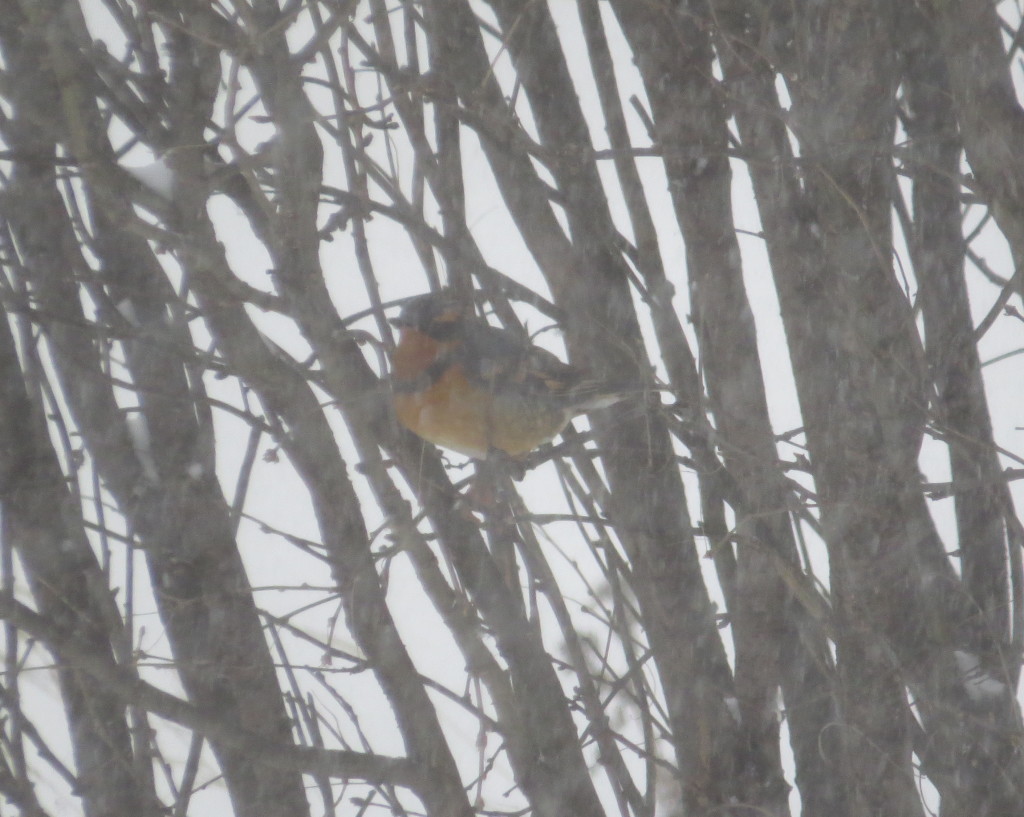
 10 and 2. Eyes straight. I couldn’t be distracted by birds and such on the drive; my focus was on the road and those who patrol it as we hurtled down the highway. With a slightly elevated heart rate for over three hours, I was racing to get home from Duluth and the North Shore to get on the scene of a great bird before sundown. The bird that had been upgraded to the top of the priority list that we were now straining to reach was none other than the Snowy Owl. And with a blizzard that was forecast to dump a lot of snow on us late that night, this was the last easy day to find a white bird.
10 and 2. Eyes straight. I couldn’t be distracted by birds and such on the drive; my focus was on the road and those who patrol it as we hurtled down the highway. With a slightly elevated heart rate for over three hours, I was racing to get home from Duluth and the North Shore to get on the scene of a great bird before sundown. The bird that had been upgraded to the top of the priority list that we were now straining to reach was none other than the Snowy Owl. And with a blizzard that was forecast to dump a lot of snow on us late that night, this was the last easy day to find a white bird.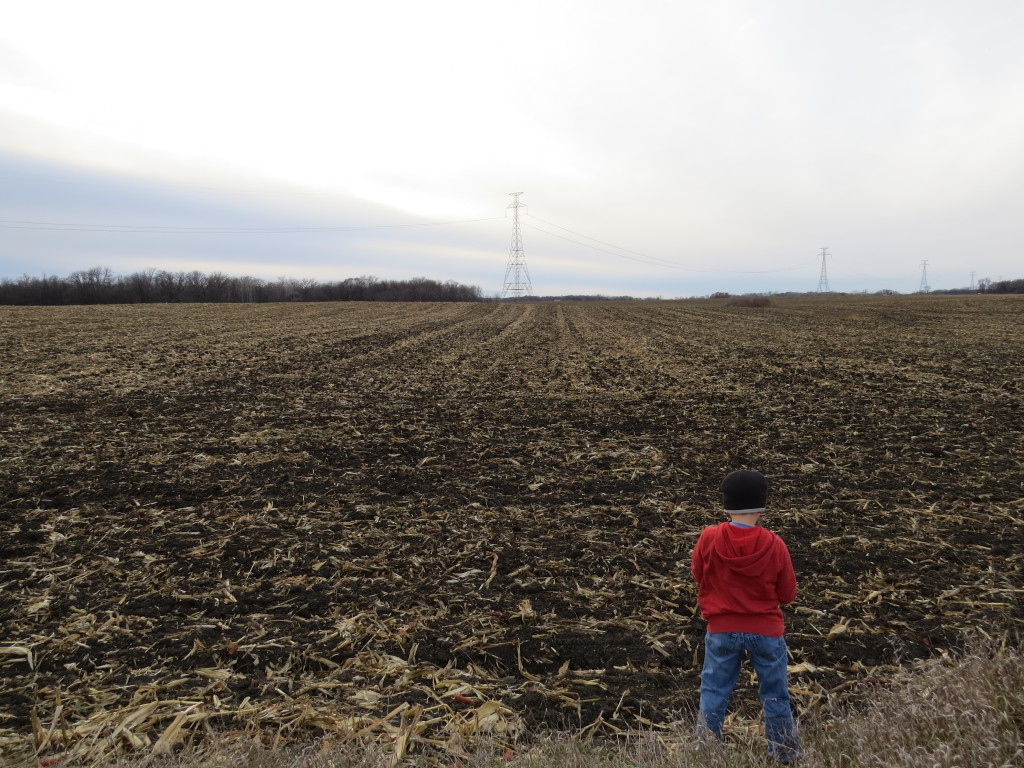
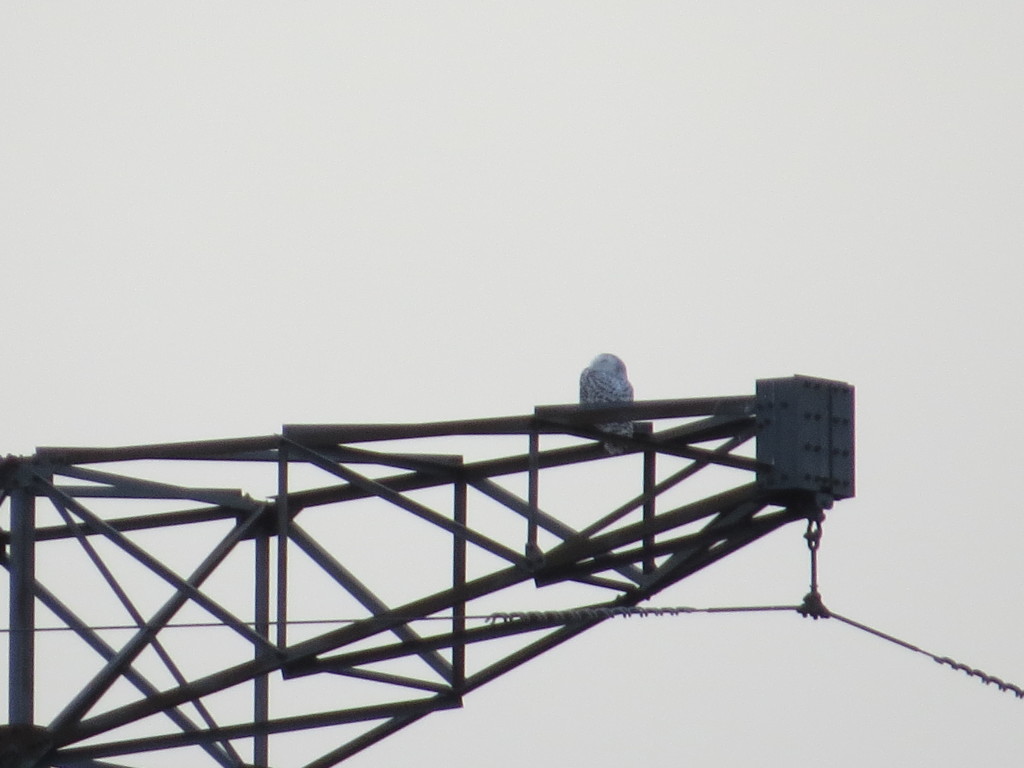
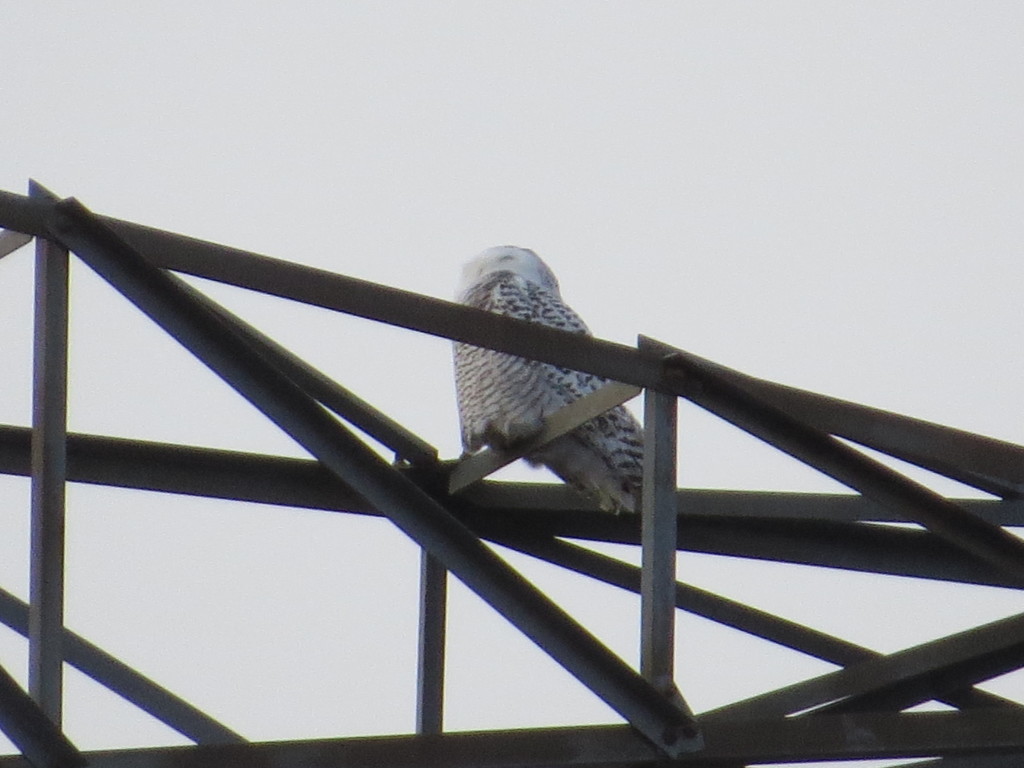 Just as shocking as the owl’s height was its coloration. Mike saw an all-white Snowy at 10 yards just 5 miles away a few days ago. This was definitely a second Snowy Owl. Are we in for an echo year of another big irruption? As of this writing, according to the sources Jeff Grotte has pulled together, there have now been 10 Snowies in Minnesota already! Jeff has put together a great Facebook group called “Owl About Minnesota” with lots of great photos and intel.
Just as shocking as the owl’s height was its coloration. Mike saw an all-white Snowy at 10 yards just 5 miles away a few days ago. This was definitely a second Snowy Owl. Are we in for an echo year of another big irruption? As of this writing, according to the sources Jeff Grotte has pulled together, there have now been 10 Snowies in Minnesota already! Jeff has put together a great Facebook group called “Owl About Minnesota” with lots of great photos and intel.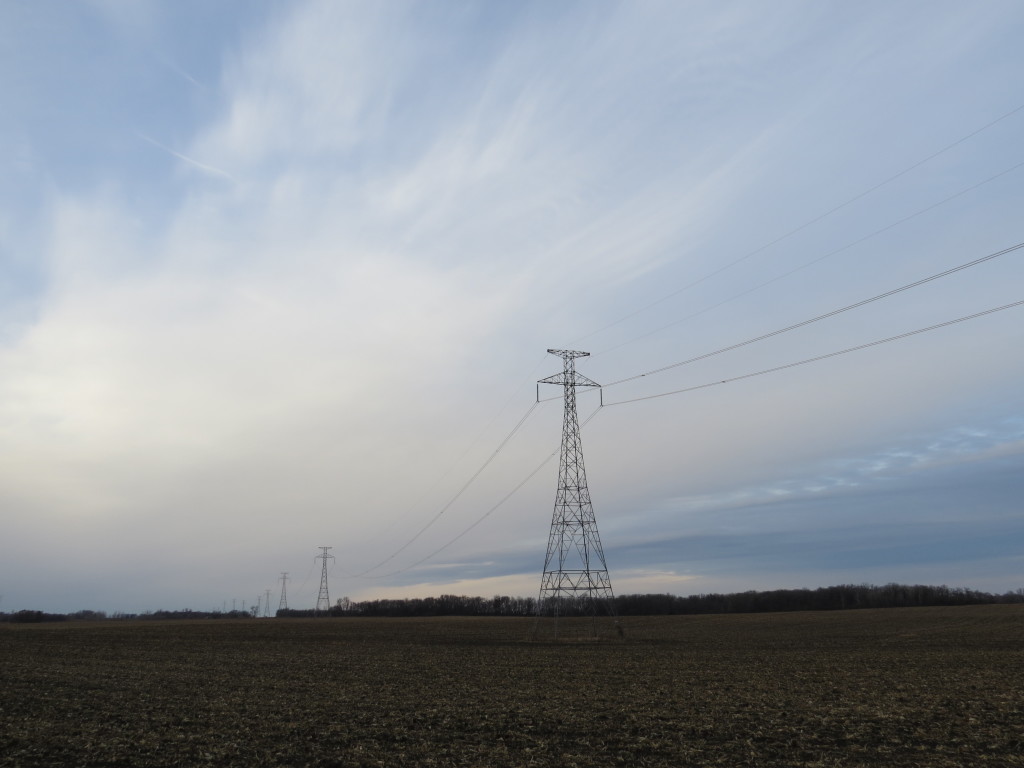
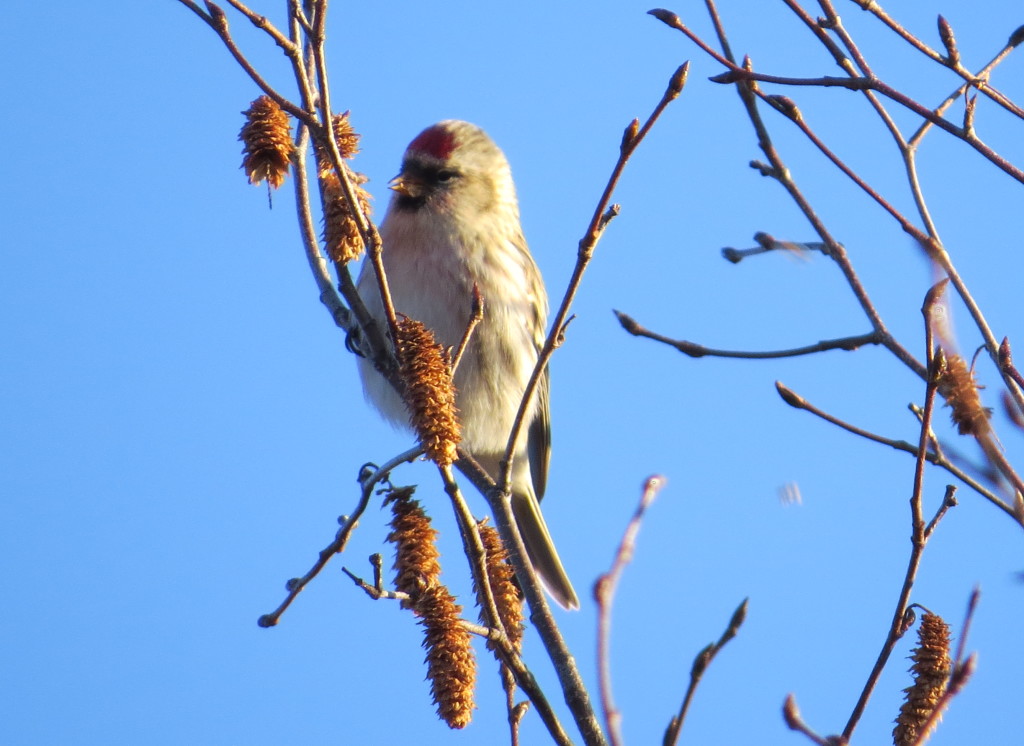
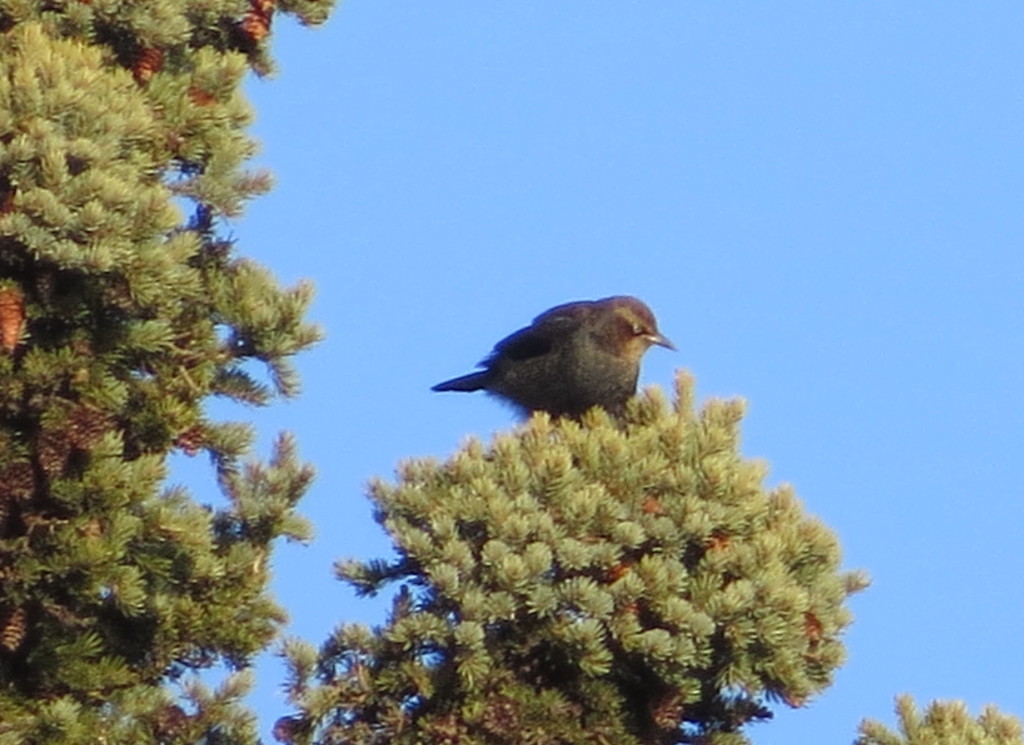
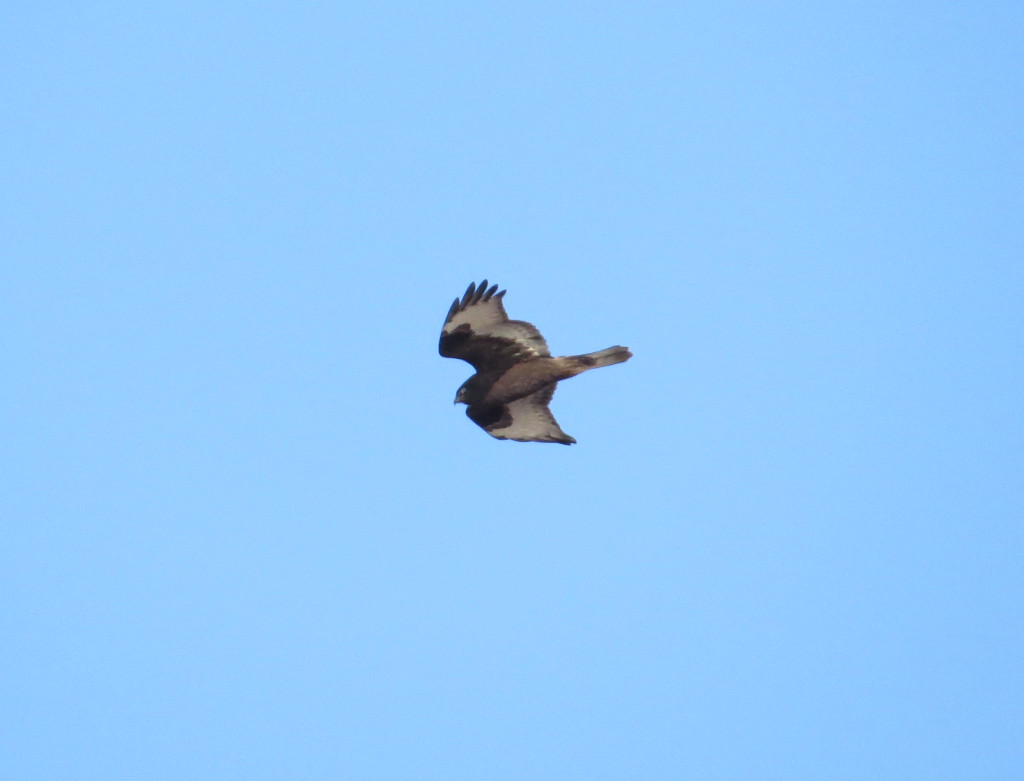
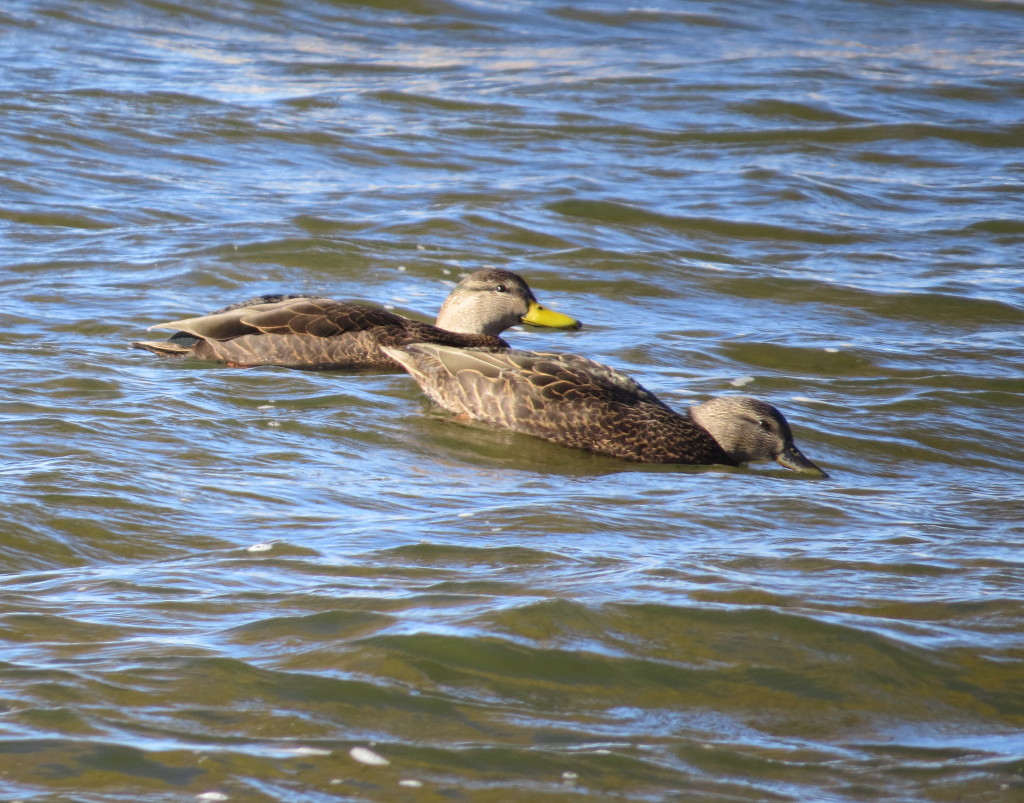
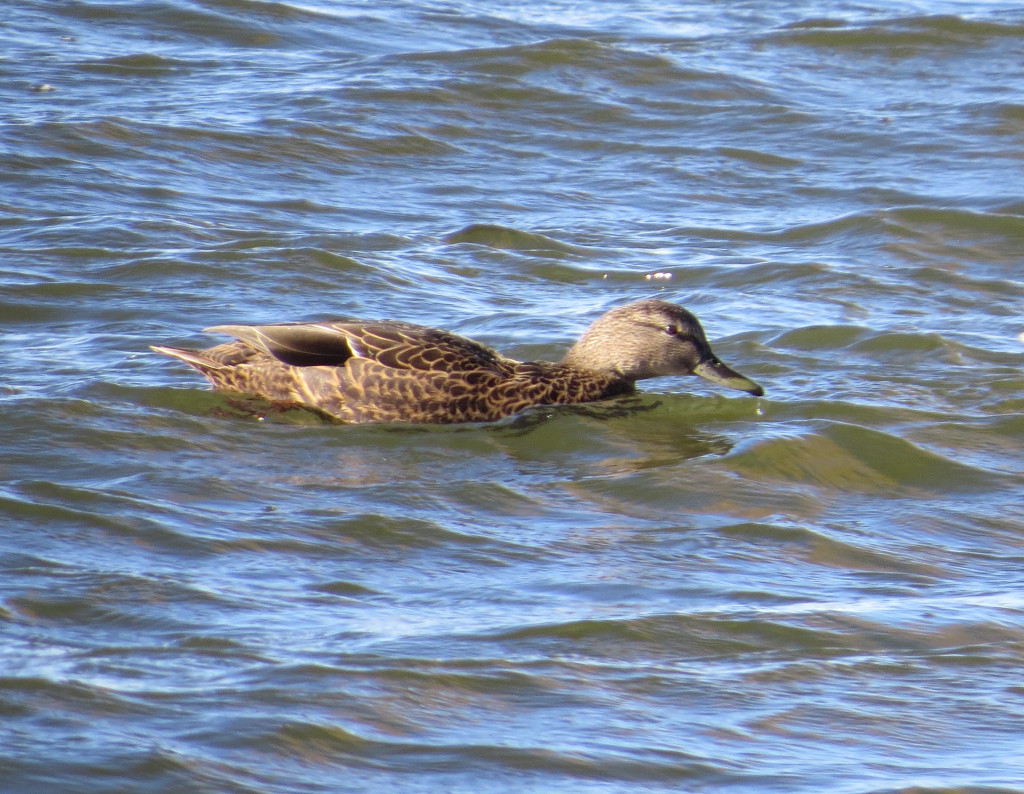
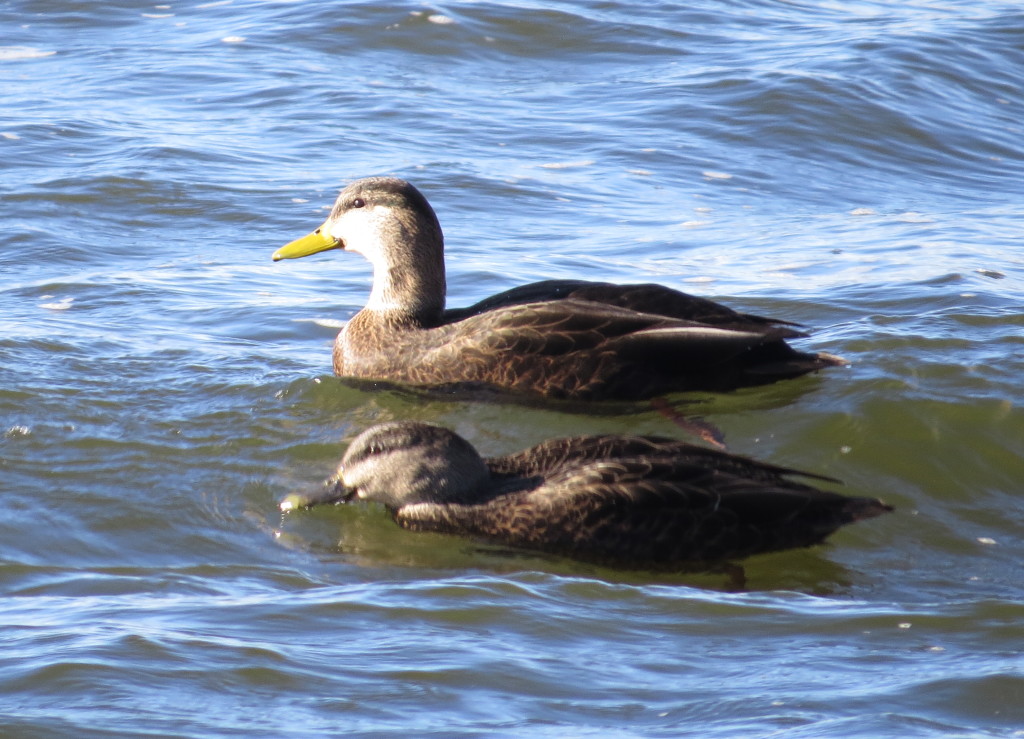
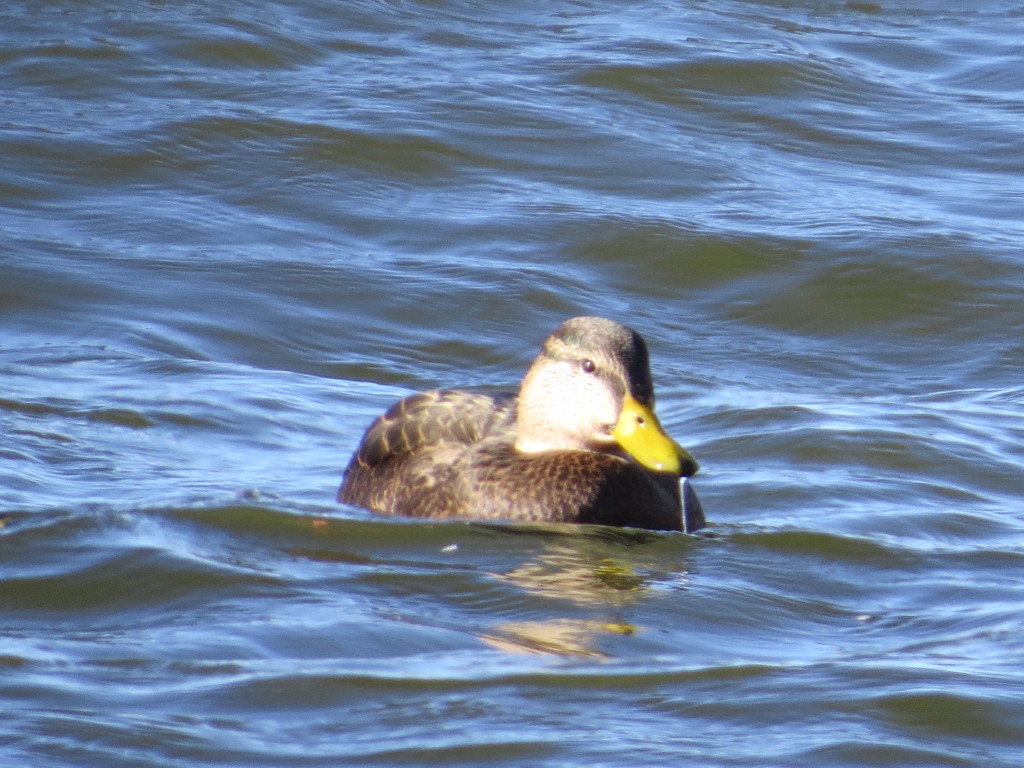
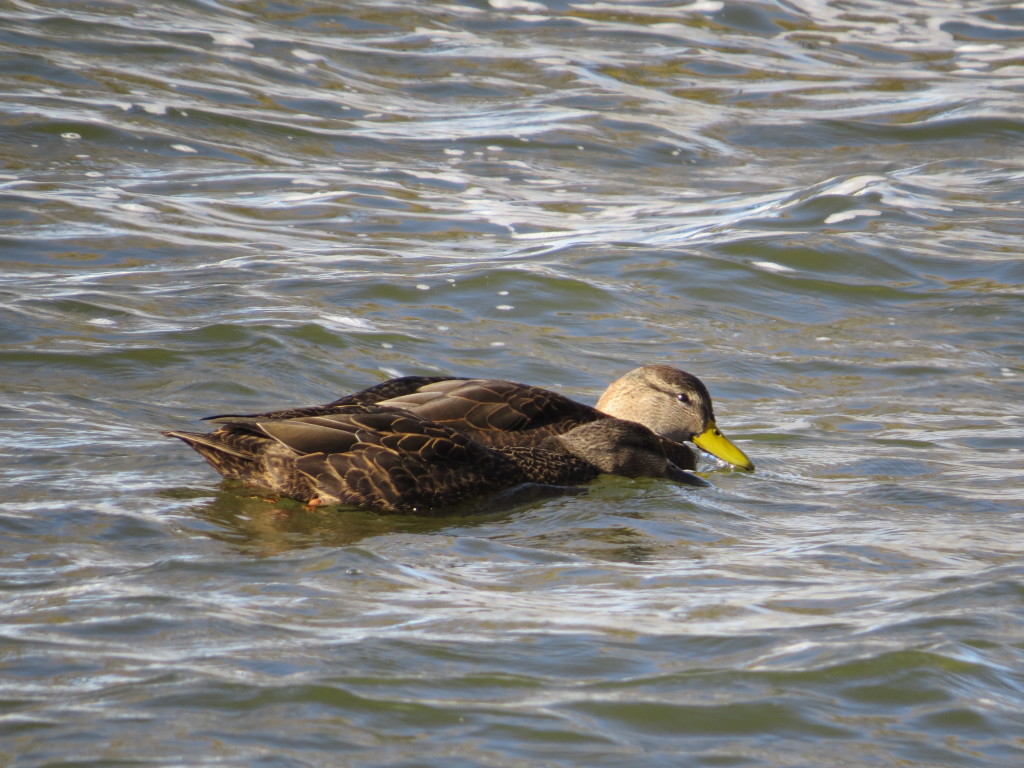
 There has been a gaping hole in our Minnesota bird collection. We have traveled extensively throughout the state and have pretty much seen all the specialty birds tucked into hidden nooks and little-known crannies. Despite that fact, we have neglected one of the state’s most important birding areas – Lake Superior. Here the possibilities for new birds abound with many sea duck species, northern gull species, oddball loon species and even three jaeger species. I have never known how to approach birding the big water from the vast 150 miles of shoreline between Duluth and the Canadian border. I had long ago figured that someday I might just have to hire a guide for a day to learn how to bird this sea-environment. A couple weeks ago, though, I saw that Clinton Nienhaus was leading a FREE field trip through the Duluth Audubon Society along the North Shore specifically to look for sea ducks. Free is always good, unless it’s a puppy, so I went for it. Visions of Scoters and Harlequin Ducks danced in my head while I awaited this trip.
There has been a gaping hole in our Minnesota bird collection. We have traveled extensively throughout the state and have pretty much seen all the specialty birds tucked into hidden nooks and little-known crannies. Despite that fact, we have neglected one of the state’s most important birding areas – Lake Superior. Here the possibilities for new birds abound with many sea duck species, northern gull species, oddball loon species and even three jaeger species. I have never known how to approach birding the big water from the vast 150 miles of shoreline between Duluth and the Canadian border. I had long ago figured that someday I might just have to hire a guide for a day to learn how to bird this sea-environment. A couple weeks ago, though, I saw that Clinton Nienhaus was leading a FREE field trip through the Duluth Audubon Society along the North Shore specifically to look for sea ducks. Free is always good, unless it’s a puppy, so I went for it. Visions of Scoters and Harlequin Ducks danced in my head while I awaited this trip.








 I was hoping for closer looks, but distance was a factor…
I was hoping for closer looks, but distance was a factor…










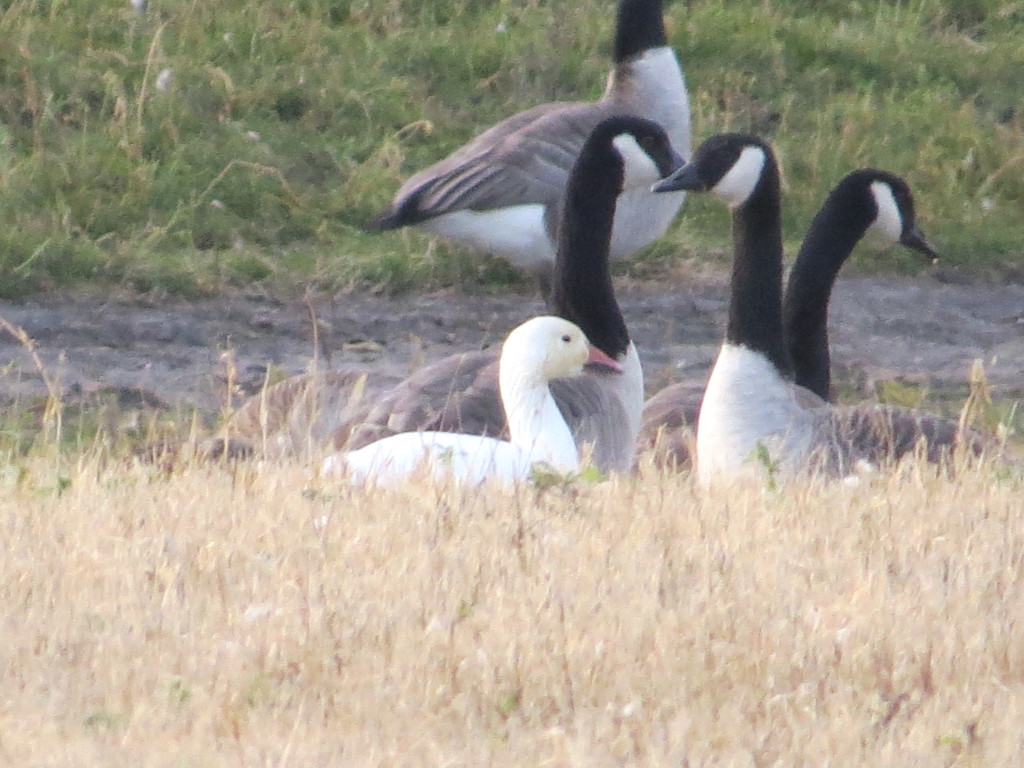
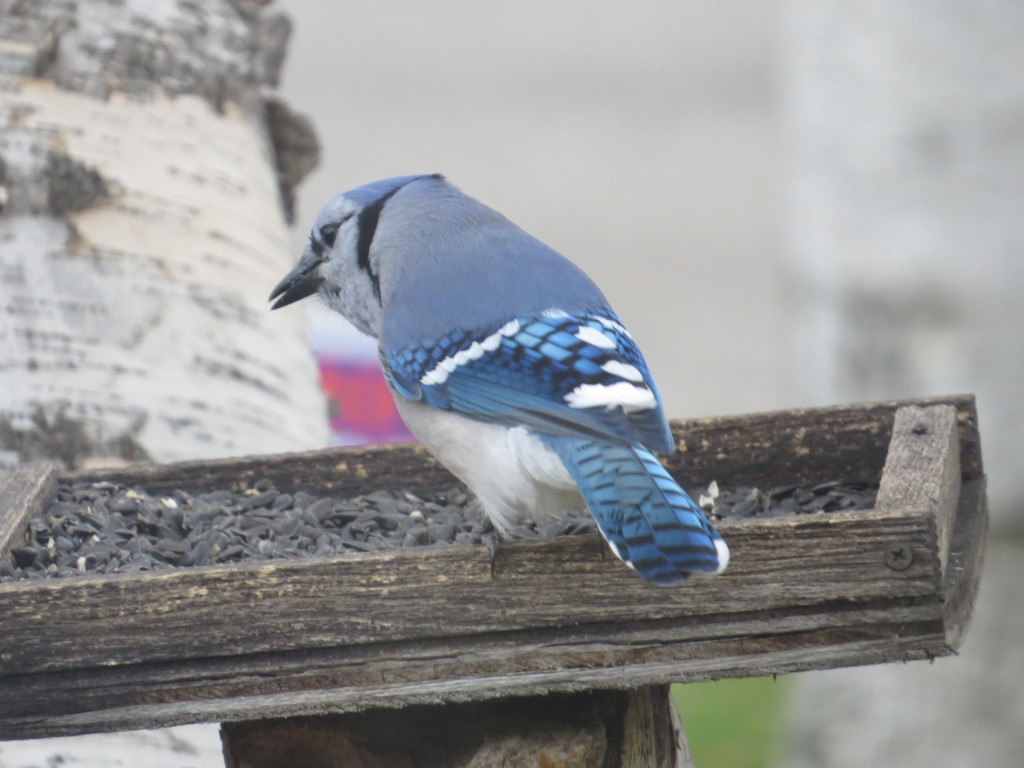
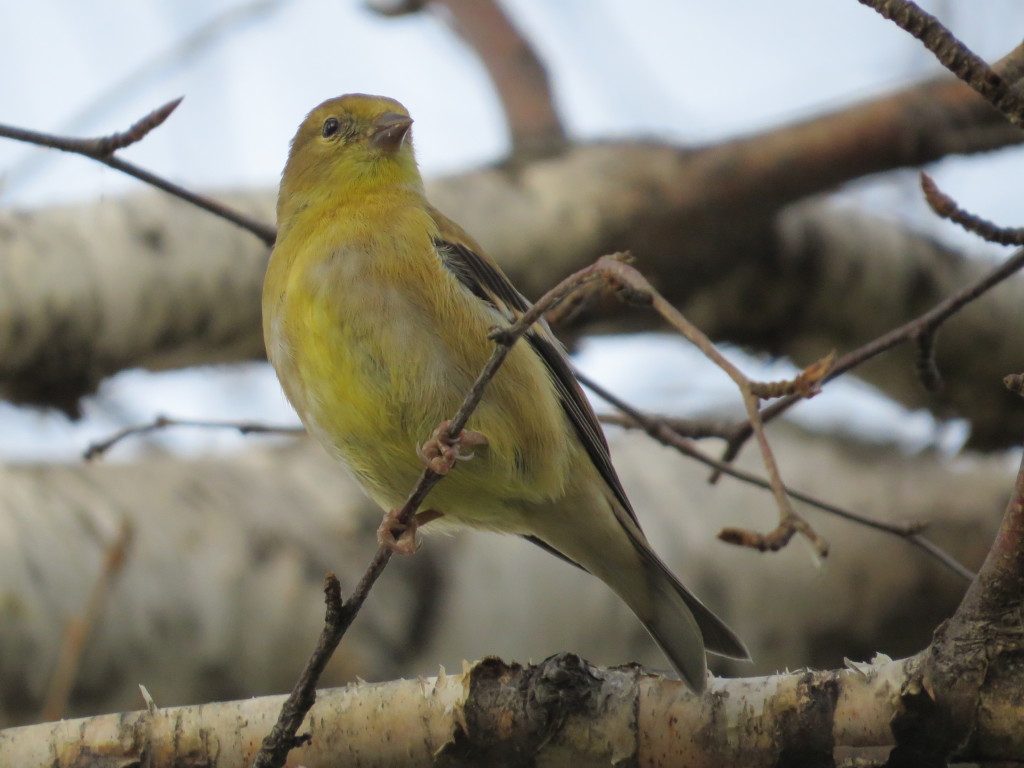
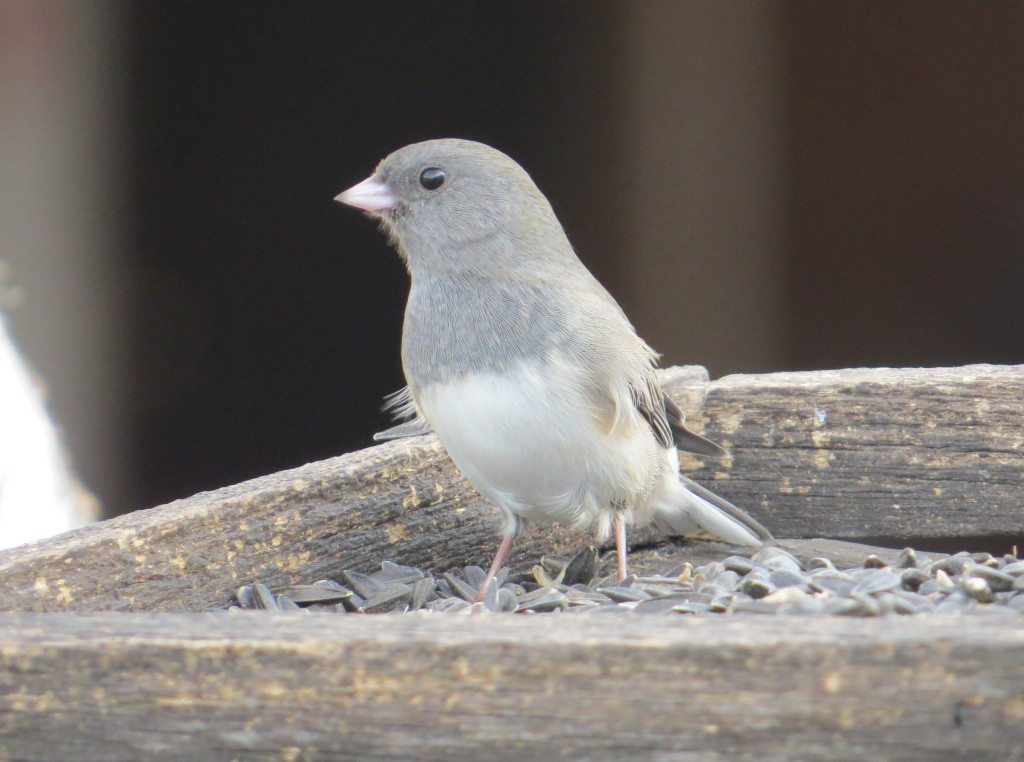
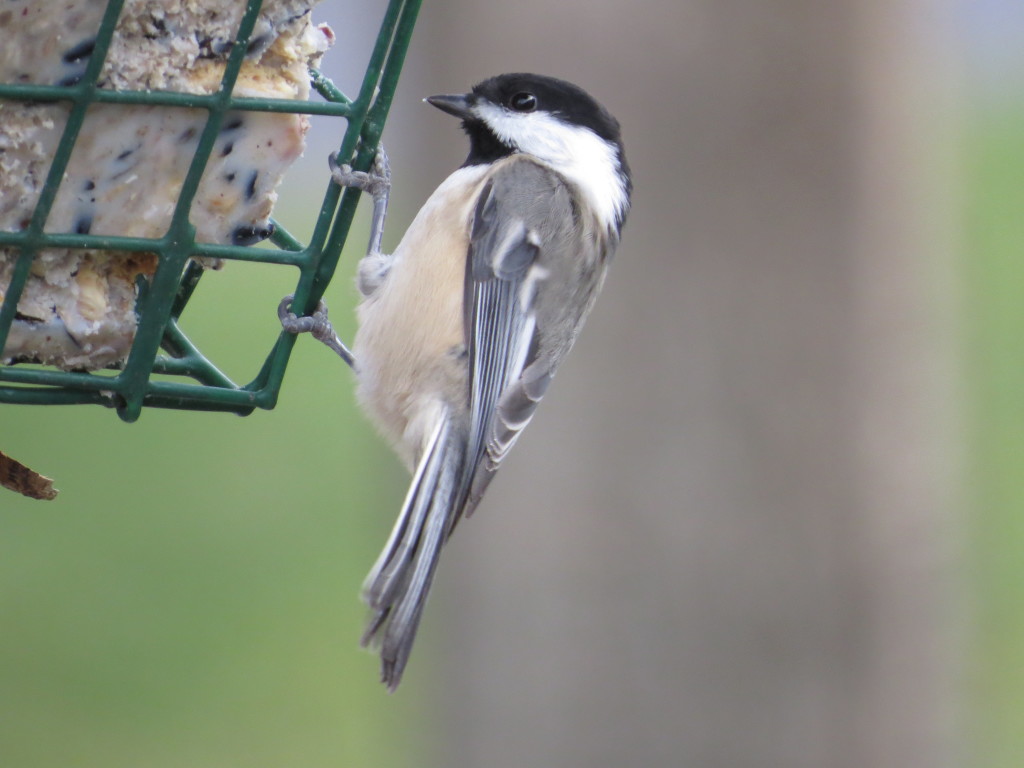
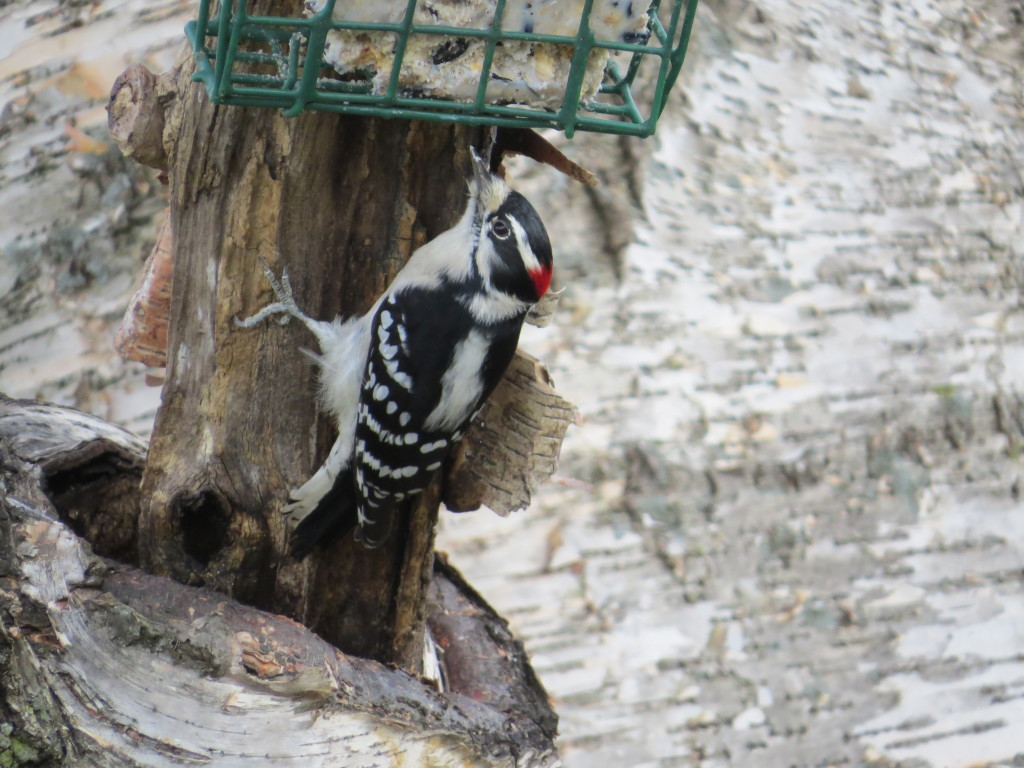
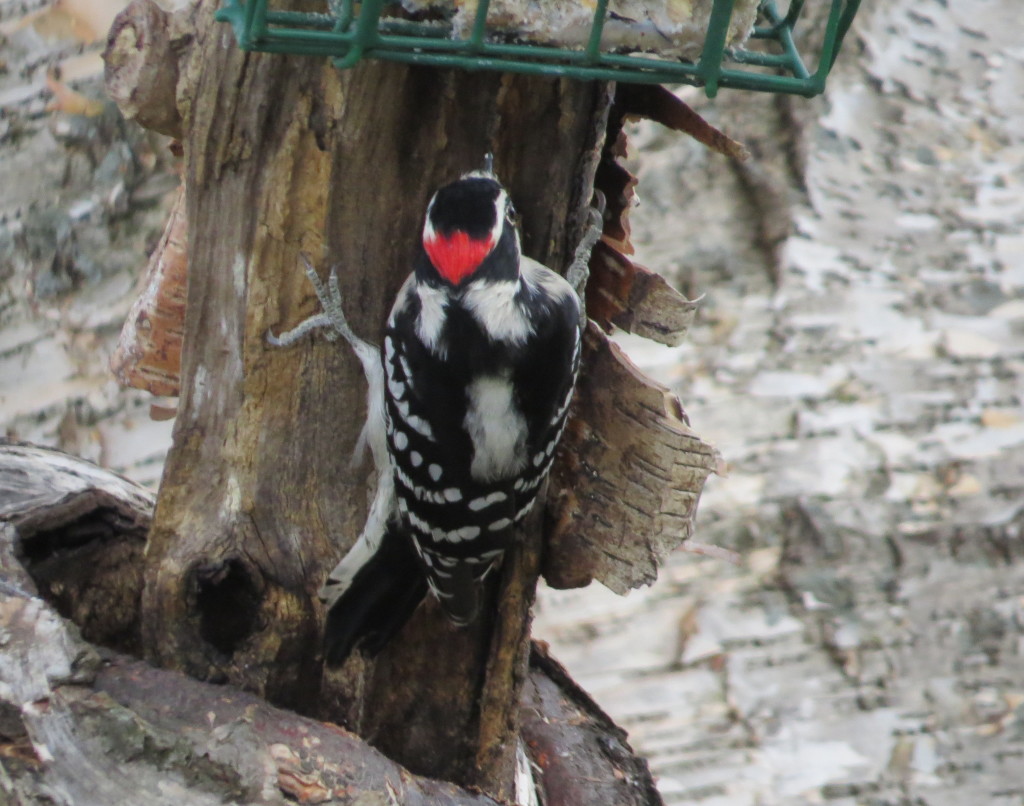
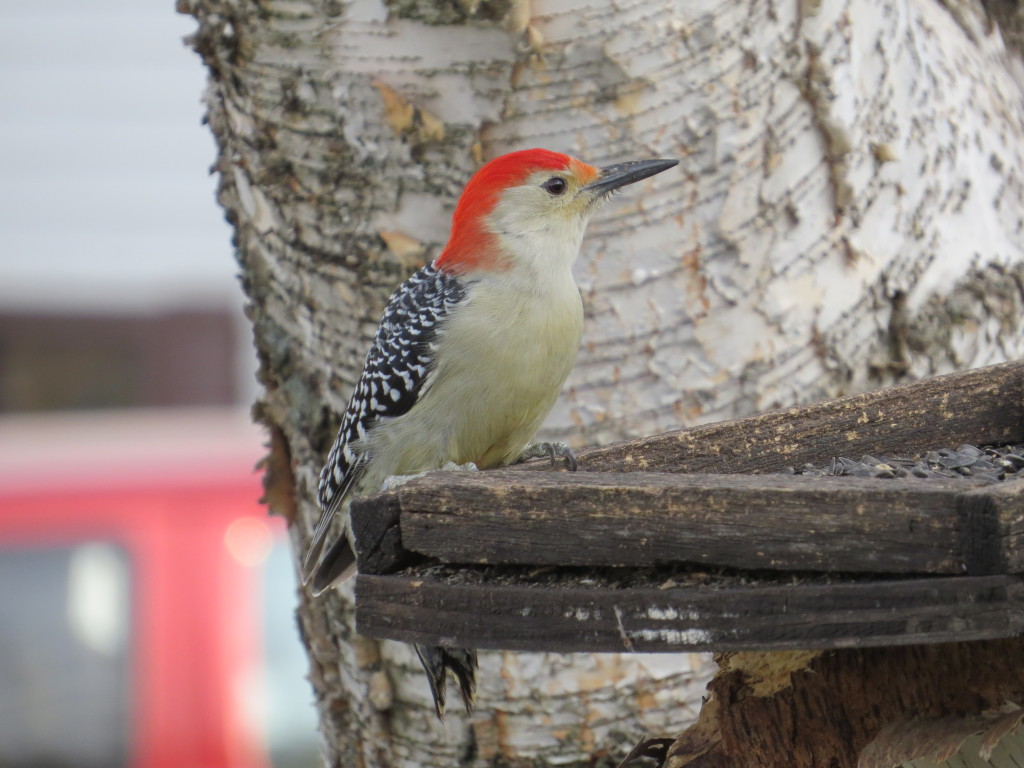
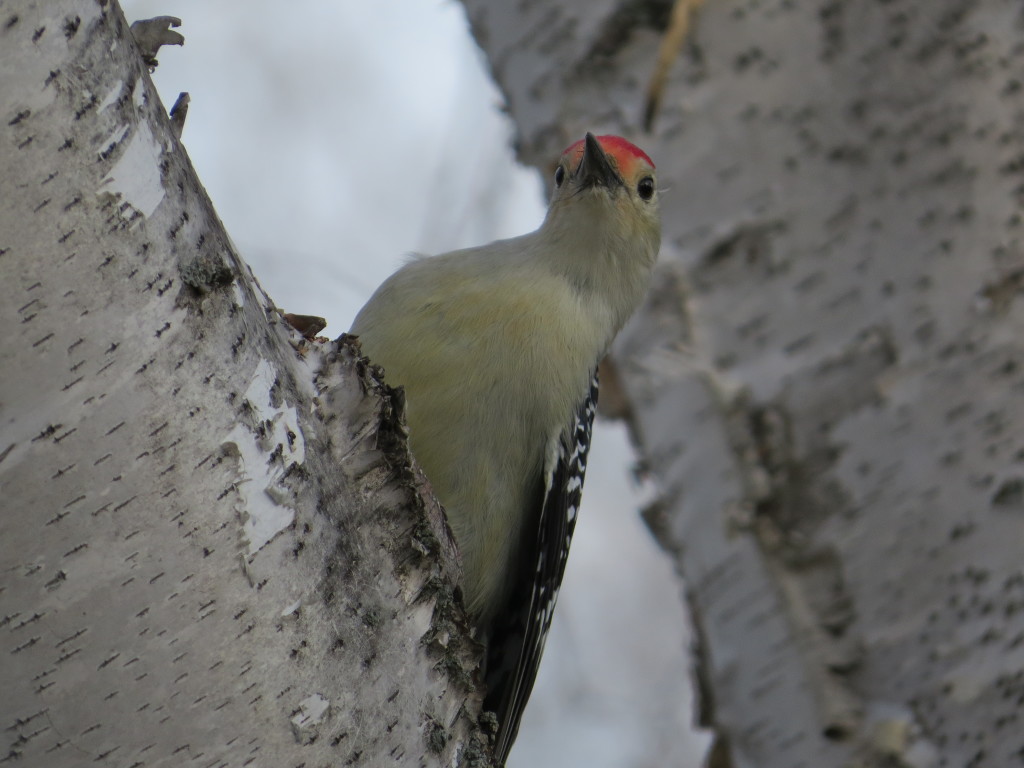
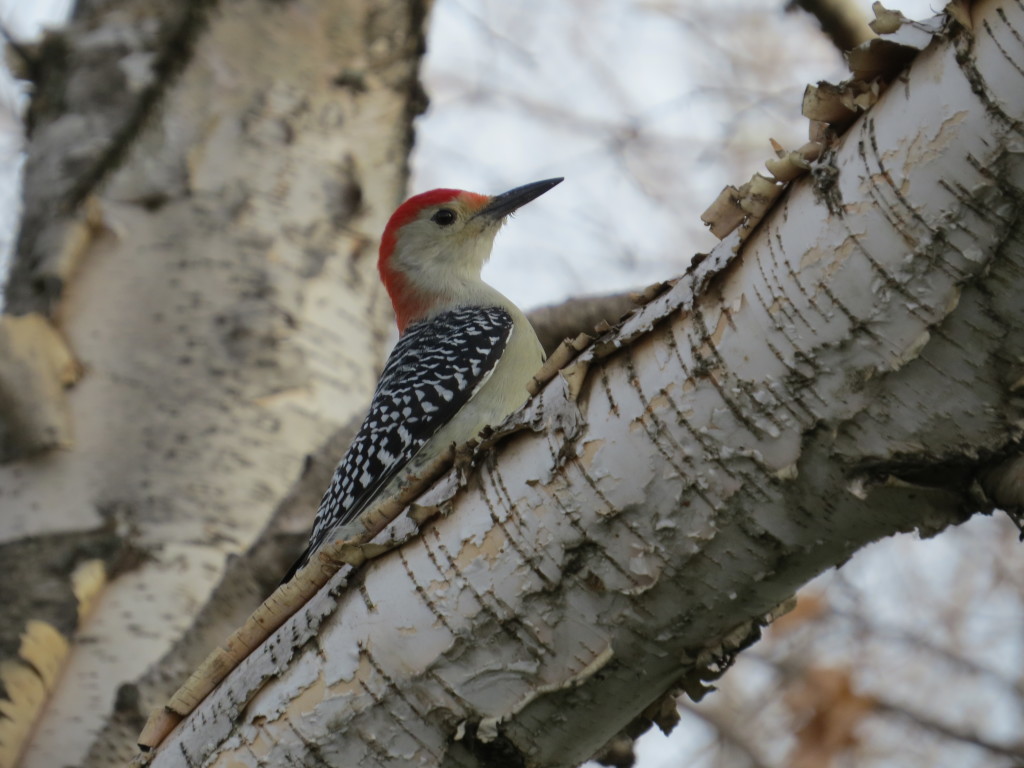
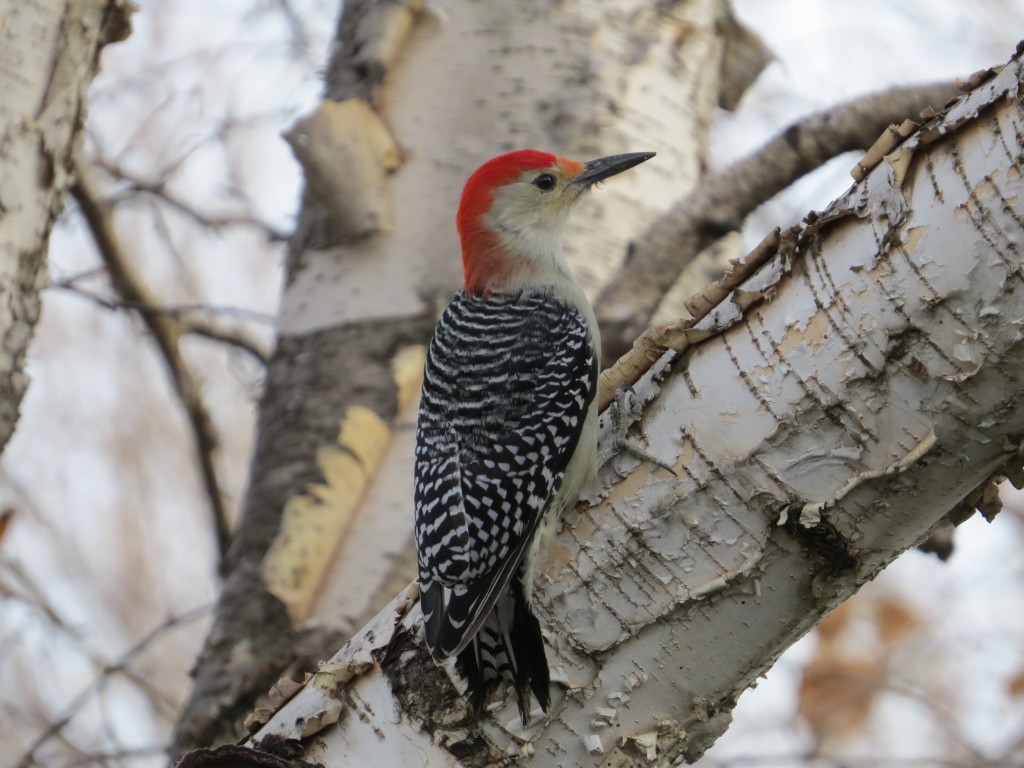
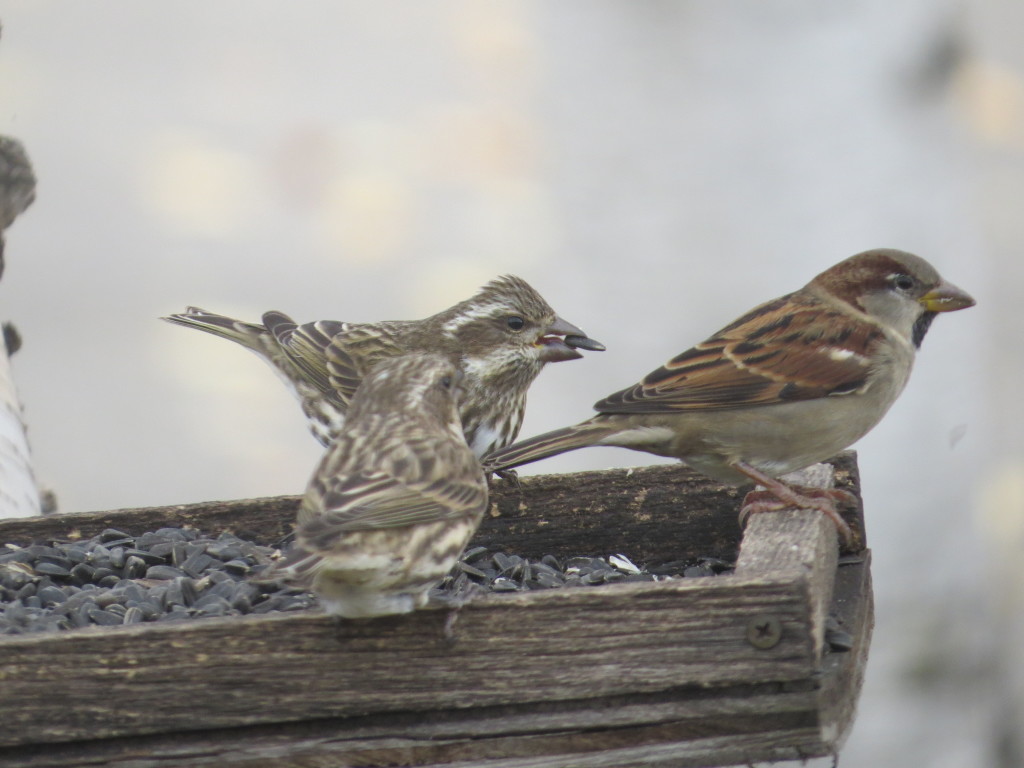
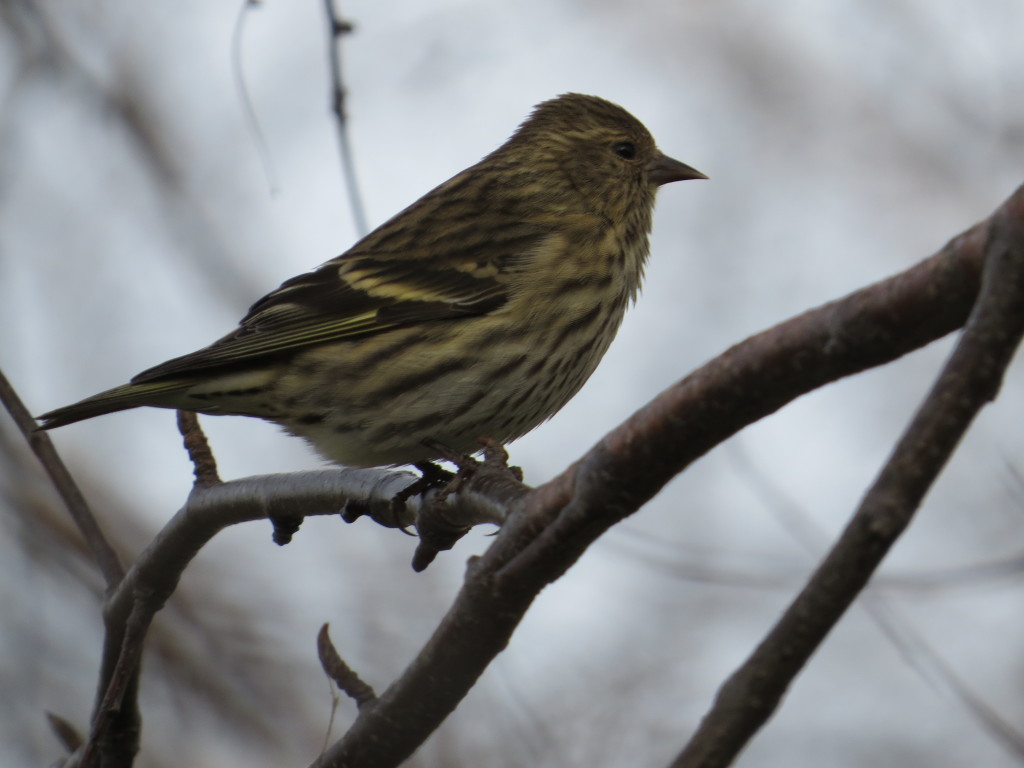
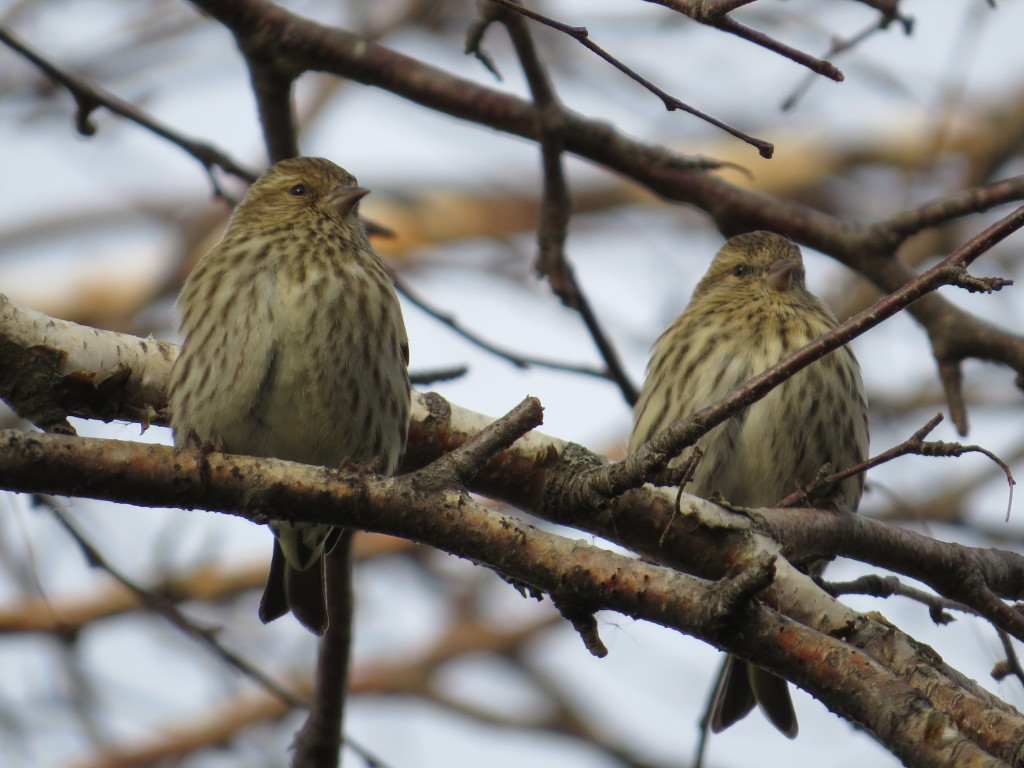
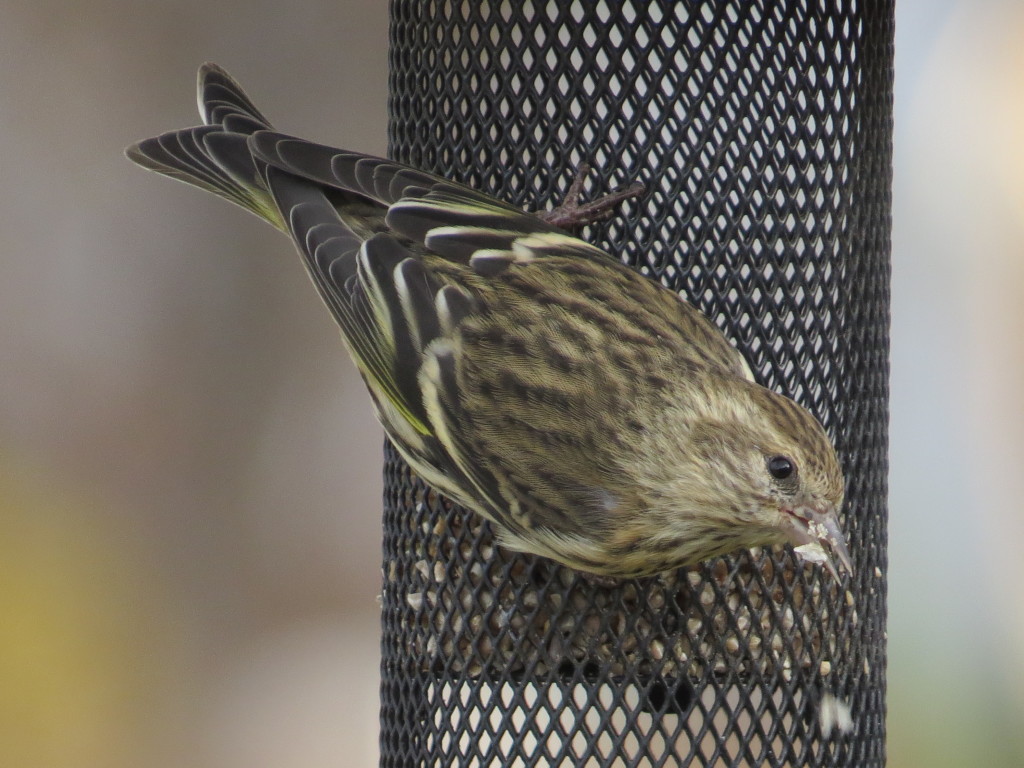
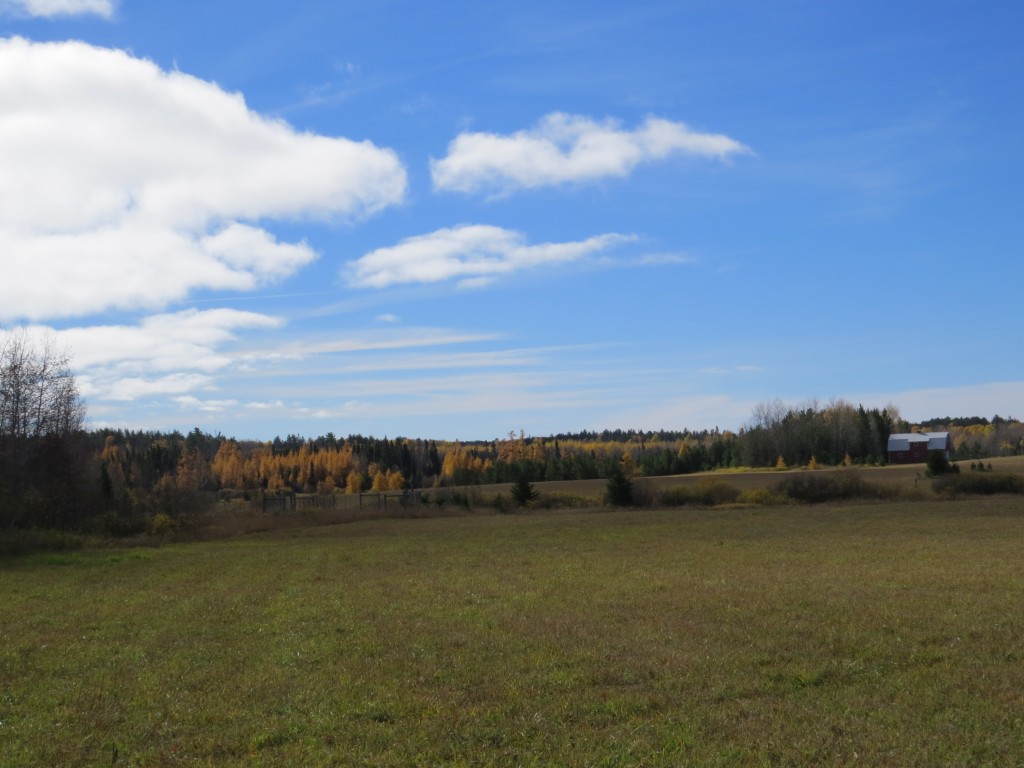 Last week we enjoyed an extra-long weekend due to fall break, so we made the 265-mile trek home to northern Minnesota to visit our families and enjoy the beautiful northwoods. Going up north is always a delight, but doing so in the fall is special treat. The stunning colors, the perfect temps, and the sweet smell of decaying Aspen leaves all remind us of this great land in which my wife and I grew up. Let’s not forget the birds, though. Northern Minnesota has its own species of interest that are not found in most of the state or the country for that matter. To that end, I had been coveting some recent pictures in my Facebook feed of Great Gray Owls in Tamarack trees in the Sax-Zim Bog. The Bog is only 45 minutes south of my parents’ place, so I usually try to hit it up each time I go home.
Last week we enjoyed an extra-long weekend due to fall break, so we made the 265-mile trek home to northern Minnesota to visit our families and enjoy the beautiful northwoods. Going up north is always a delight, but doing so in the fall is special treat. The stunning colors, the perfect temps, and the sweet smell of decaying Aspen leaves all remind us of this great land in which my wife and I grew up. Let’s not forget the birds, though. Northern Minnesota has its own species of interest that are not found in most of the state or the country for that matter. To that end, I had been coveting some recent pictures in my Facebook feed of Great Gray Owls in Tamarack trees in the Sax-Zim Bog. The Bog is only 45 minutes south of my parents’ place, so I usually try to hit it up each time I go home.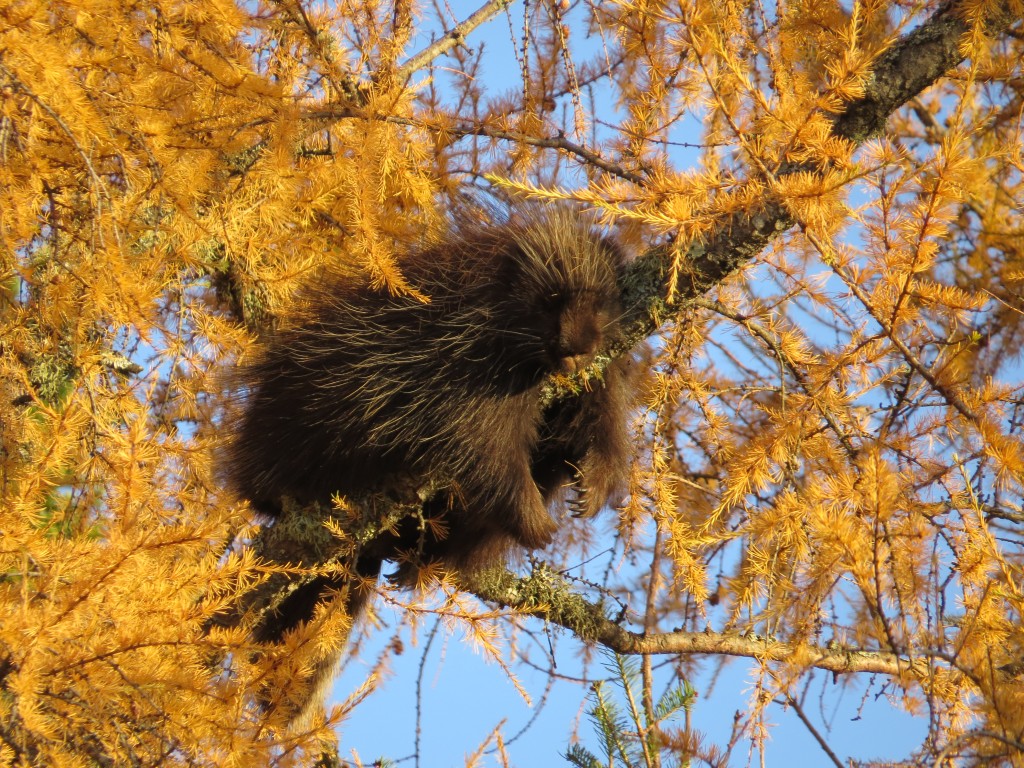
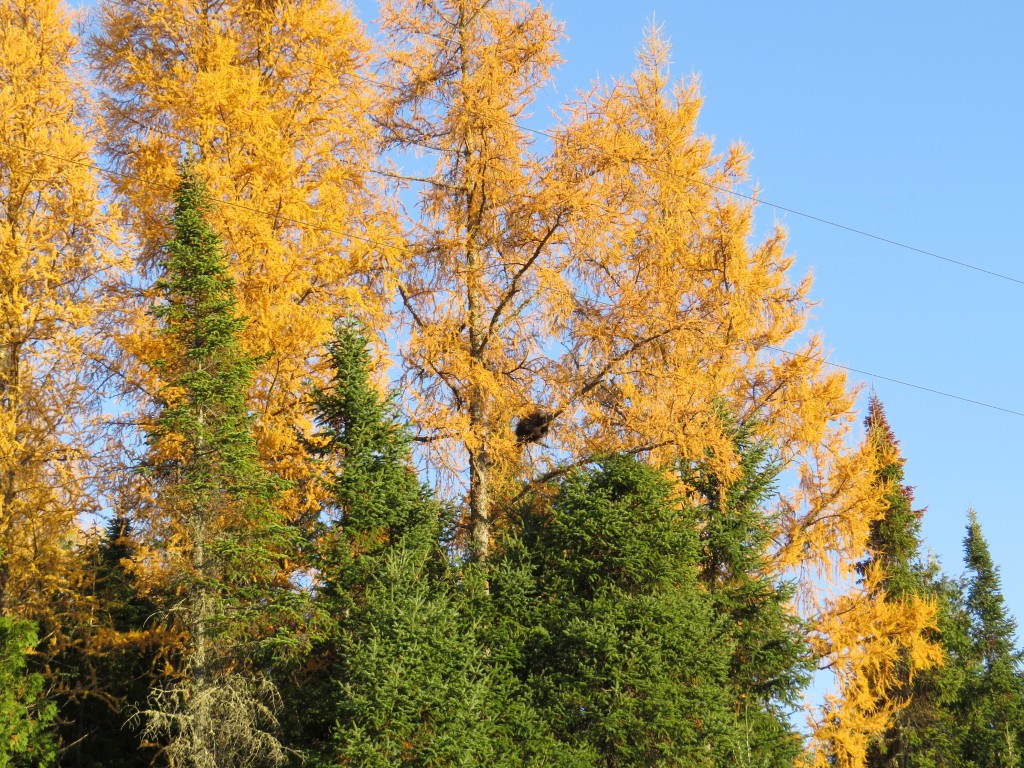
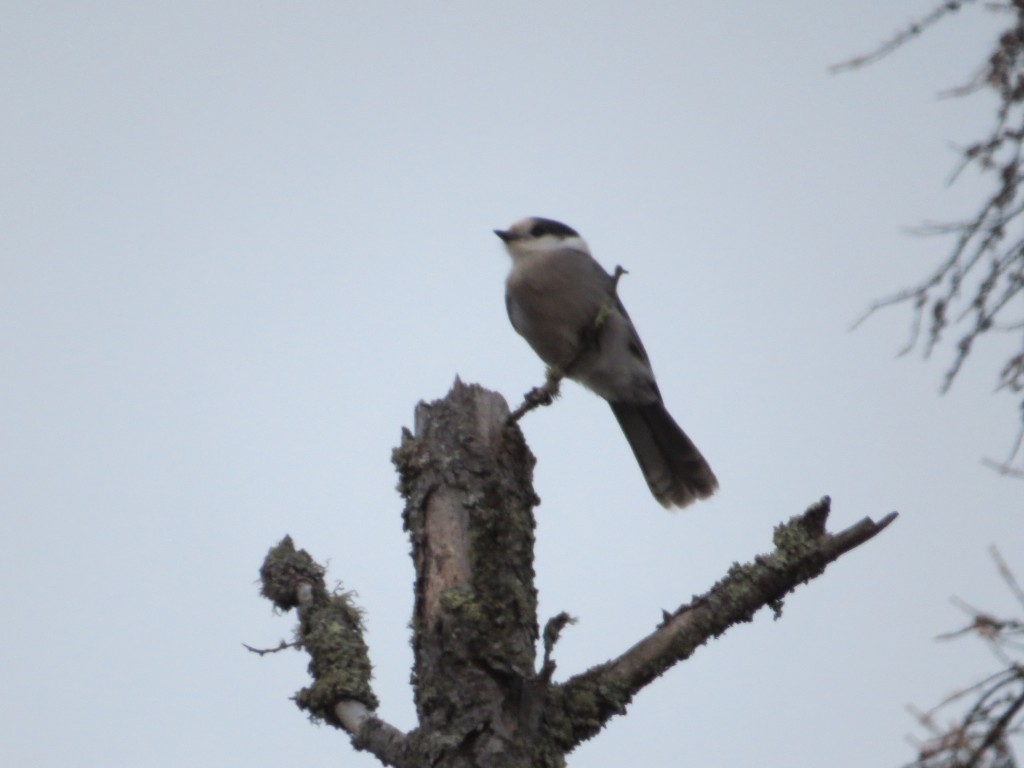
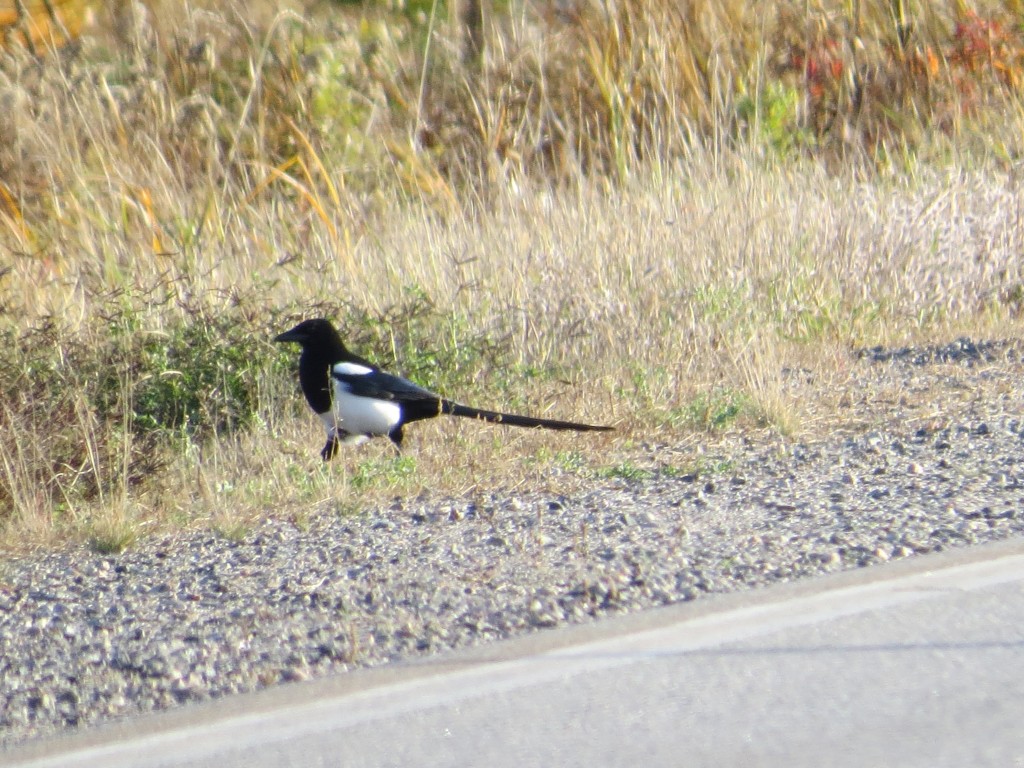 I remember when I first got into birding and being shocked that this cool bird could be found in Minnesota since I had never seen one in my life up to that point. They are known to frequent the Sax-Zim Bog. In fact, the Bog is the furthest location to the east where this species breeds. I have seen them in the Bog and in northwestern Minnesota, but I was astounded to find them so close to where I grew up. It was hands-down the best find of the trip.
I remember when I first got into birding and being shocked that this cool bird could be found in Minnesota since I had never seen one in my life up to that point. They are known to frequent the Sax-Zim Bog. In fact, the Bog is the furthest location to the east where this species breeds. I have seen them in the Bog and in northwestern Minnesota, but I was astounded to find them so close to where I grew up. It was hands-down the best find of the trip.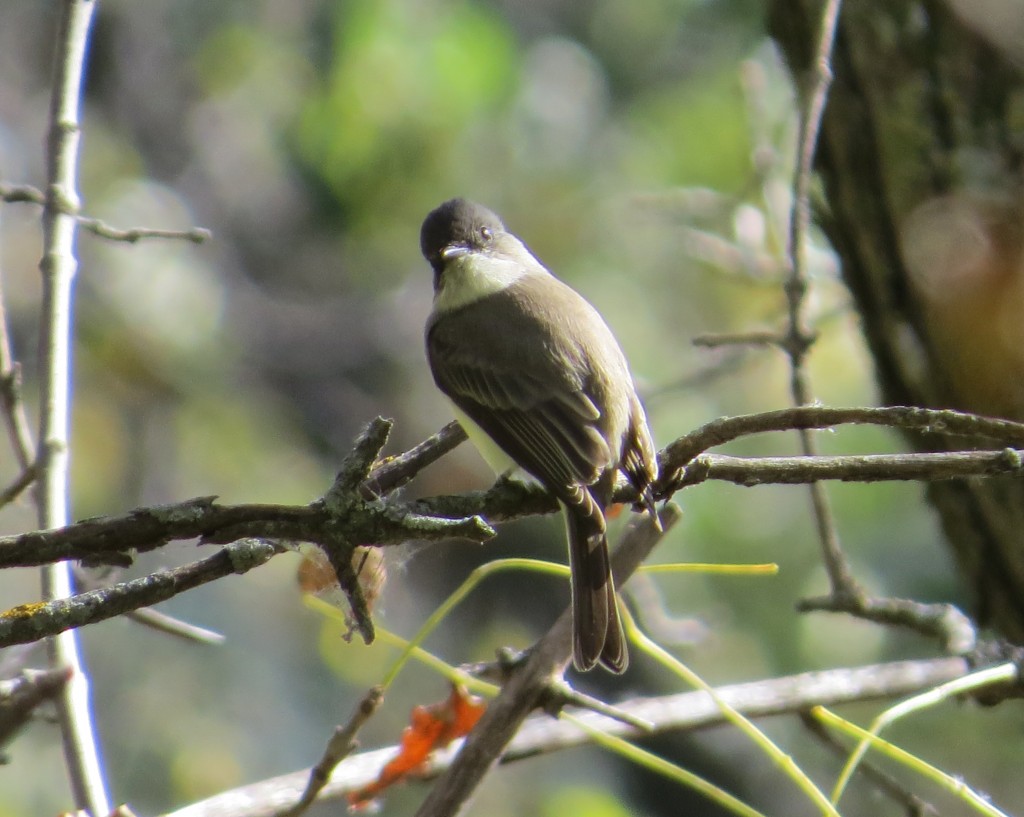
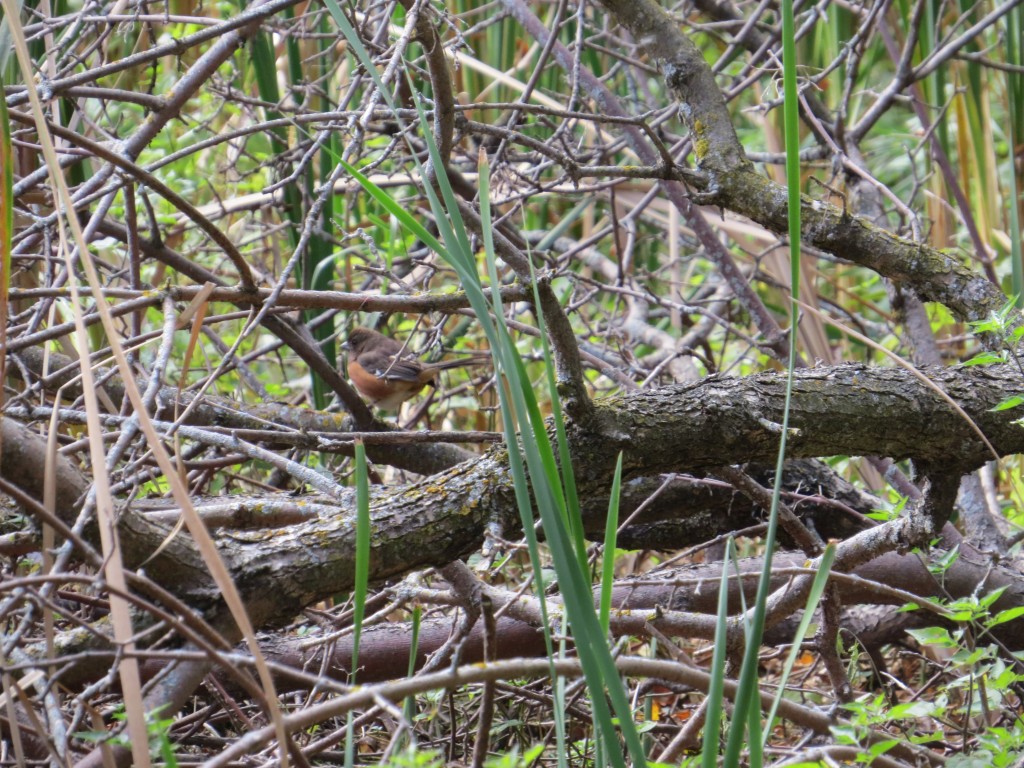 The brownish coloration on the head and back indicated it was a female. The male is jet-black instead of brown. Male or female, it didn’t matter. This was a good-looking bird and a very rare bird for our county. How rare? I looked back through the database of bird sightings at the Minnesota Ornithologists’ Union’s website and determined this was only the sixth unique Eastern Towhee to ever be documented in Kandiyohi County. Personally, this was only the second Eastern Towhee I’ve ever seen. They just aren’t common in Minnesota as a whole. This was also my second towhee species for Kandiyohi County – in a weird-twist of birding fate last spring, I found the even more rare vagrant
The brownish coloration on the head and back indicated it was a female. The male is jet-black instead of brown. Male or female, it didn’t matter. This was a good-looking bird and a very rare bird for our county. How rare? I looked back through the database of bird sightings at the Minnesota Ornithologists’ Union’s website and determined this was only the sixth unique Eastern Towhee to ever be documented in Kandiyohi County. Personally, this was only the second Eastern Towhee I’ve ever seen. They just aren’t common in Minnesota as a whole. This was also my second towhee species for Kandiyohi County – in a weird-twist of birding fate last spring, I found the even more rare vagrant 